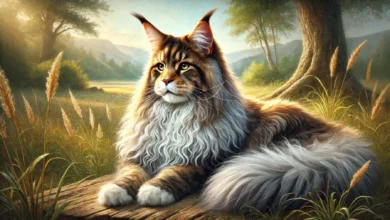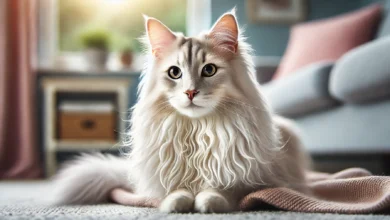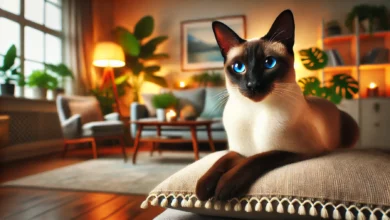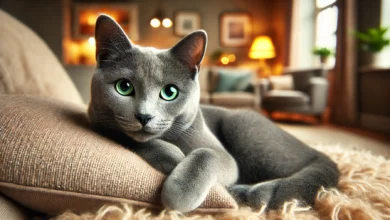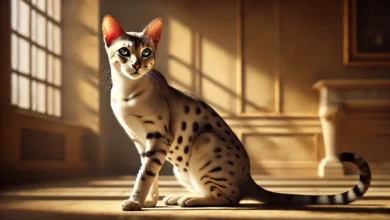Discovering Ragamuffin Cats: Gentle Giants
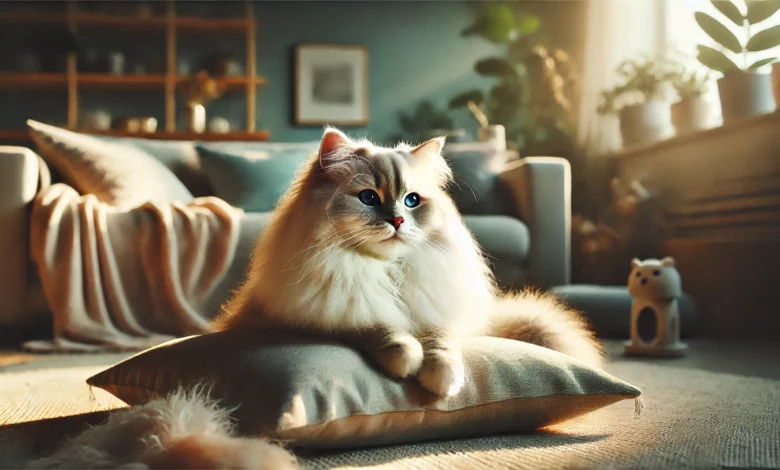
One would rightfully term the Ragamuffin cats as the ‘gentle giants’ of the cat world.
Large in size, with plush coats and an extremely affectionate nature, Ragamuffin cats are unique in every way.
Their captivating personality and easy-going nature make them perfect companions for families and individuals.
But what exactly makes these Ragamuffin cats so special in the first place, and what is it about them that cements their status as one of the most popular housecats?
In this article, we will explore all you need to know about these amazing felines.
Table of Contents
What Makes a Ragamuffin Cat So Special?
The Ragamuffin is a breed that encompasses a beautiful appearance along with the sweetest of natures.
The breed had its origin as a non-purebred sibling of the Ragdoll cat, from which it was developed to retain the loving and laid-back nature while introducing some variety in color and coat patterns.
However, over time, Ragamuffin cats carved out their own identity as a distinct breed that is both lovable and distinctive.
Origins of the Ragamuffin Breed
Since the history of the Ragamuffin cat is inextricably linked to the origins of the Ragdoll breed, the breeding of Ragamuffin cats started in the 1990s from Ragdoll stock.
A group of breeders was interested in developing a diverse variation that would retain the much-appreciated characteristics of the Ragdoll, such as being docile and quiet, while introducing new colors and patterns into its coat.
The result was the stunning and loving Ragamuffin breed.
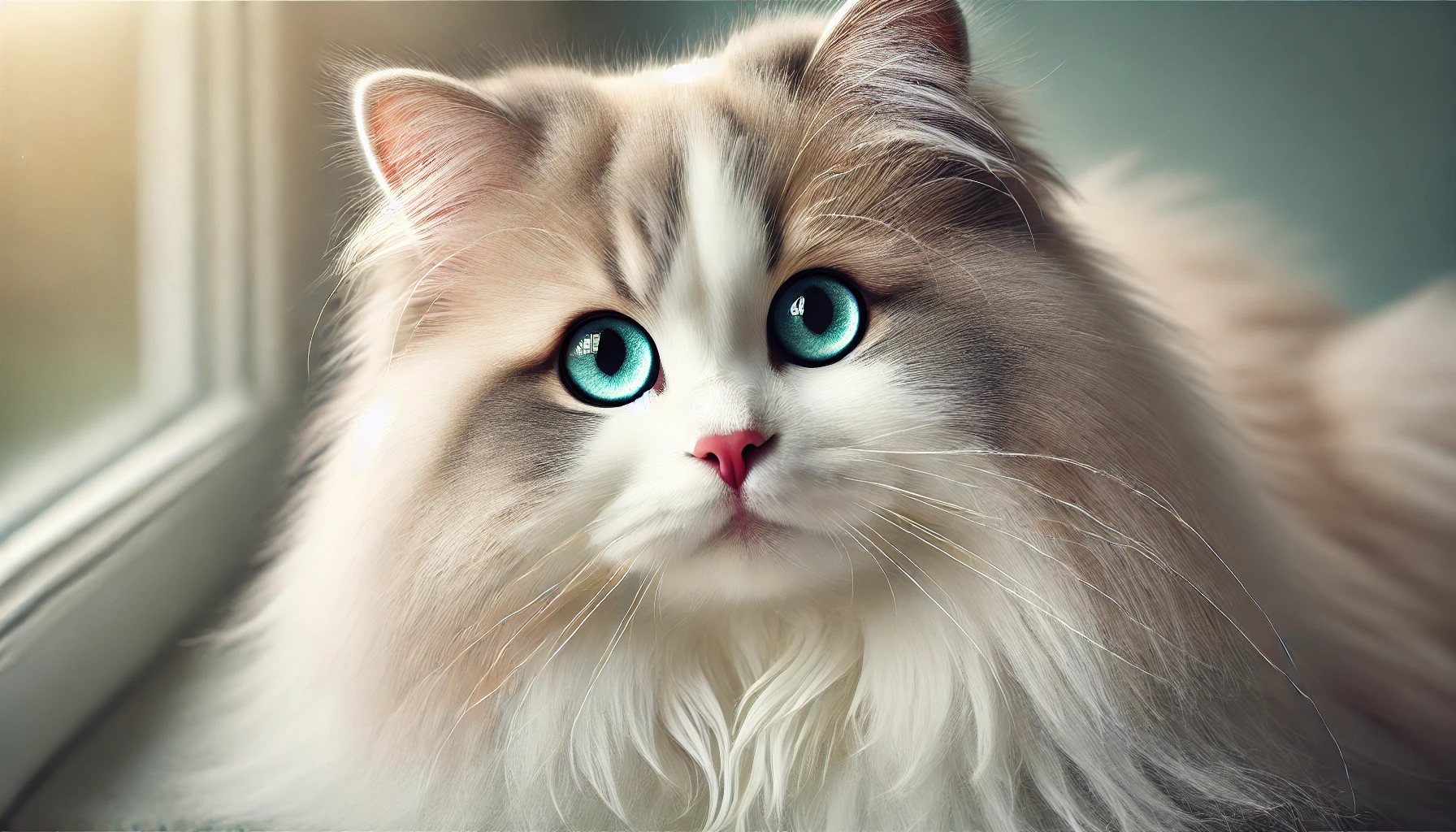
Distinctive Appearance of the Ragamuffin
Ragamuffin cats are large, muscular felines with soft, fluffy coats that make them seem irresistibly cuddly.
Their eyes are particularly striking, often appearing in several colors that contrast beautifully with their sumptuous fur.
The breed has thick, rabbit-like fur that is silky to the touch and can range from solid colors to tabby patterns, and even tortoiseshell.
This combination of size, coat color, and eye color makes Ragamuffins stand out among other breeds of cats.
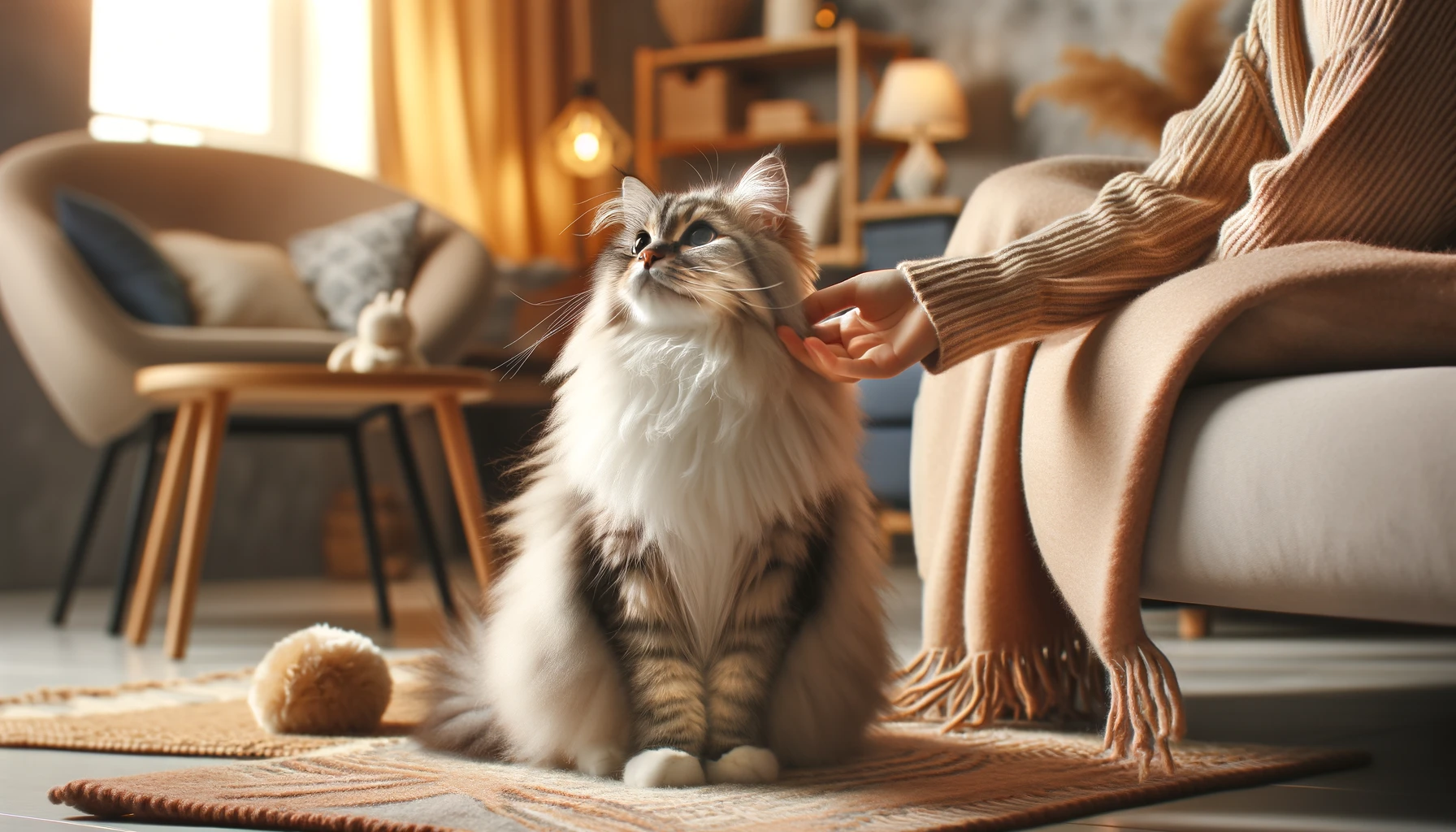
Personality Traits of Ragamuffin Cats
What truly separates Ragamuffin cats from other breeds is their personality.
These cats are extremely affectionate, often referred to as ‘lap cats’ because they love to be held and cuddled.
They are very gentle, patient, and especially good with children, making them ideal for families.
Despite their large build, Ragamuffin cats are quiet and laid-back, rarely displaying aggression or excessive energy.
They thrive on human companionship and will often follow you around the house, seeking attention and affection.
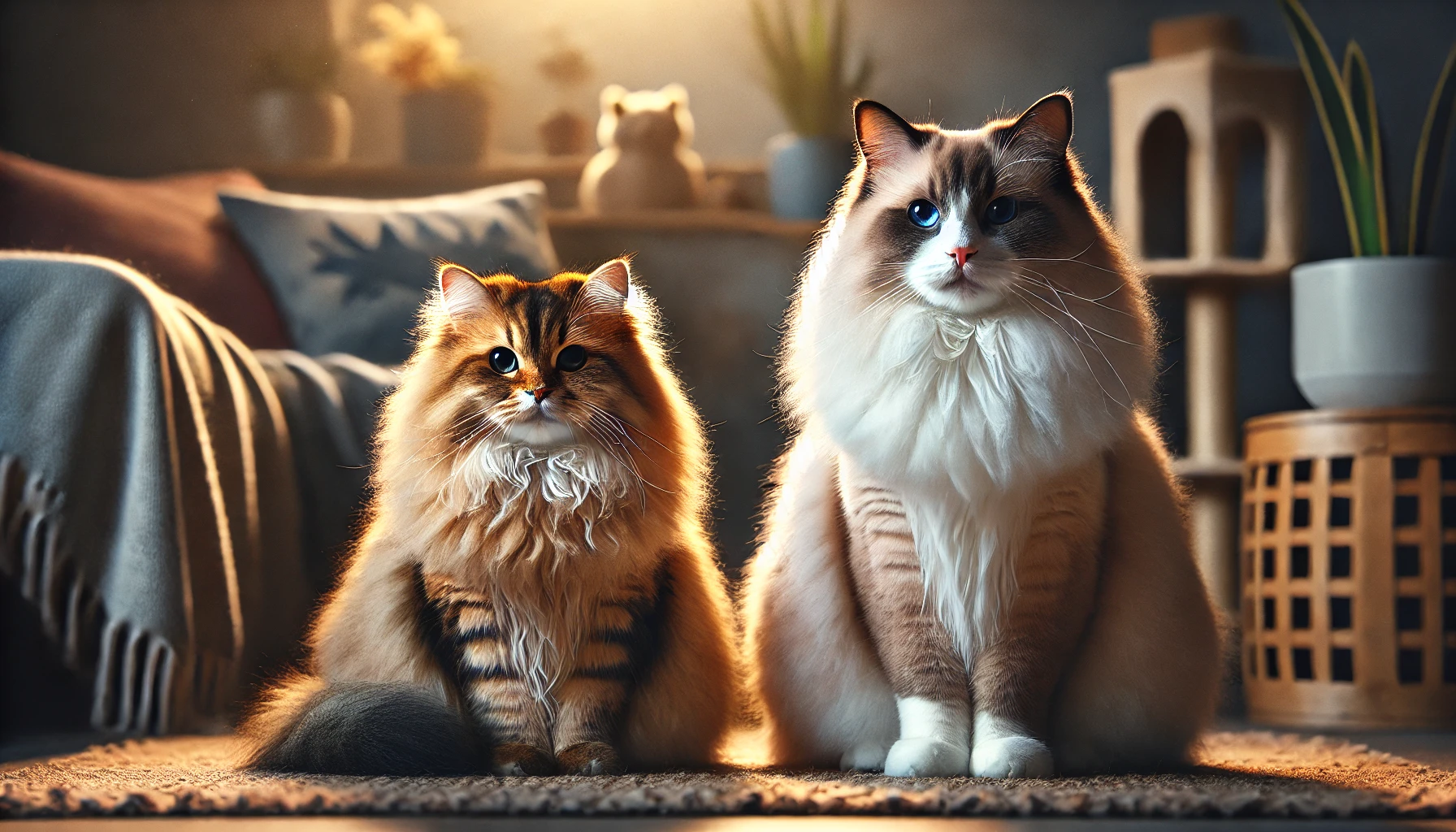
Differences Between Ragamuffins and Ragdolls
Although there are many similarities between Ragamuffins and Ragdolls, there are also several differences that make Ragamuffin cats stand out.
For one, Ragamuffin cats have a broader variety of coat colors and patterns compared to Ragdolls, which commonly have pointed patterns.
Additionally, Ragamuffins are said to be more outgoing and social than Ragdolls, though both breeds are equally affectionate and love human interaction.
These subtle differences make Ragamuffin cats a unique choice for those seeking a loving and beautiful feline companion.
Ragamuffin cats are known for their affectionate and laid-back nature, making them perfect companions for families and individuals alike. Their large size, plush coats, and gentle personalities distinguish them as one of the most beloved housecats.
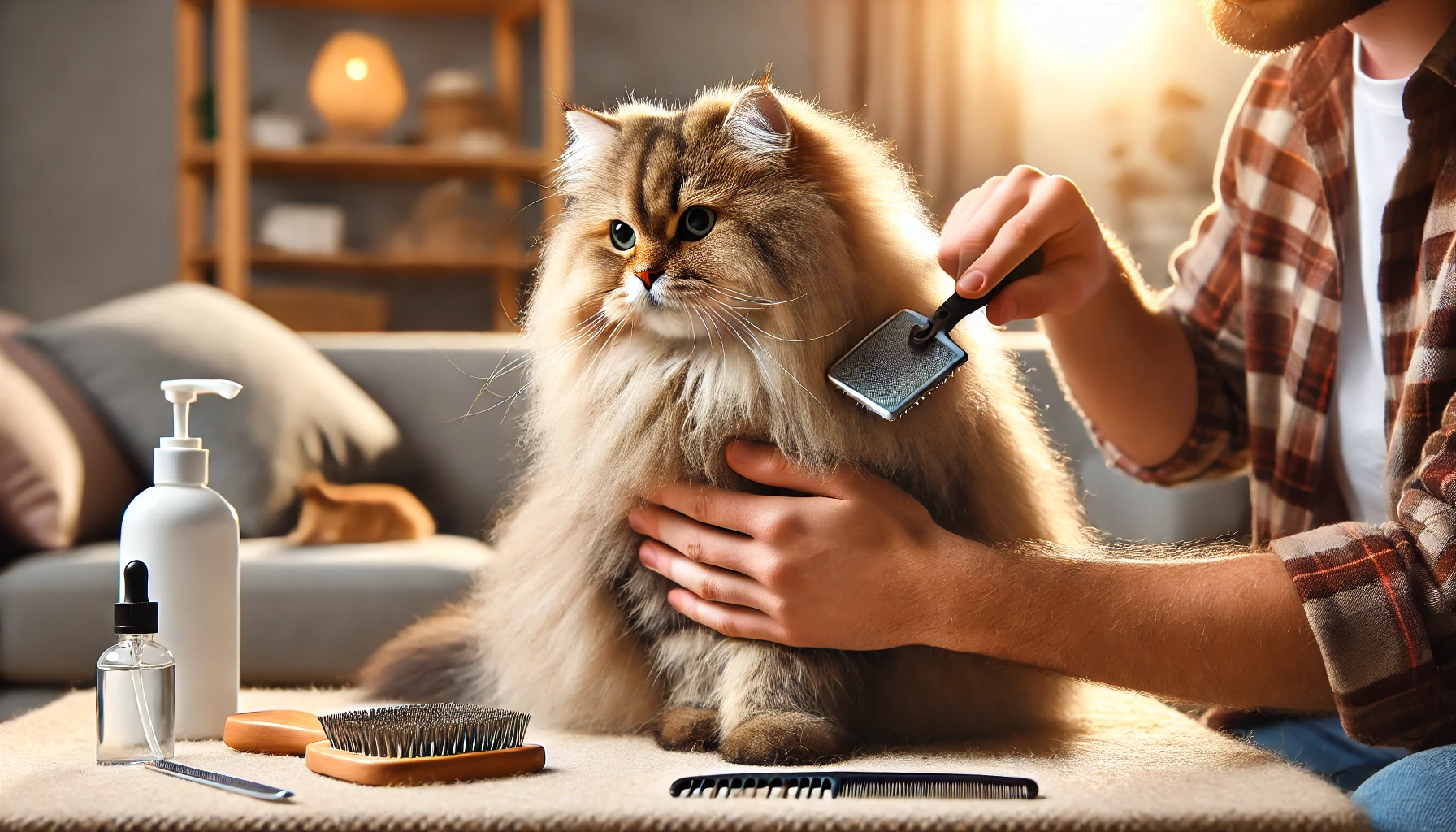
Caring for Your Ragamuffin Cat
Besides their good looks and affectionate nature, special care is required to maintain the general health and well-being of a Ragamuffin cat.
From caring for their luxurious fur to managing their diet and ensuring they get enough exercise, Ragamuffin cats have specific needs that help them thrive.
While they are generally low-maintenance in terms of temperament, understanding their care needs is key to ensuring they live long, healthy, and contented lives.
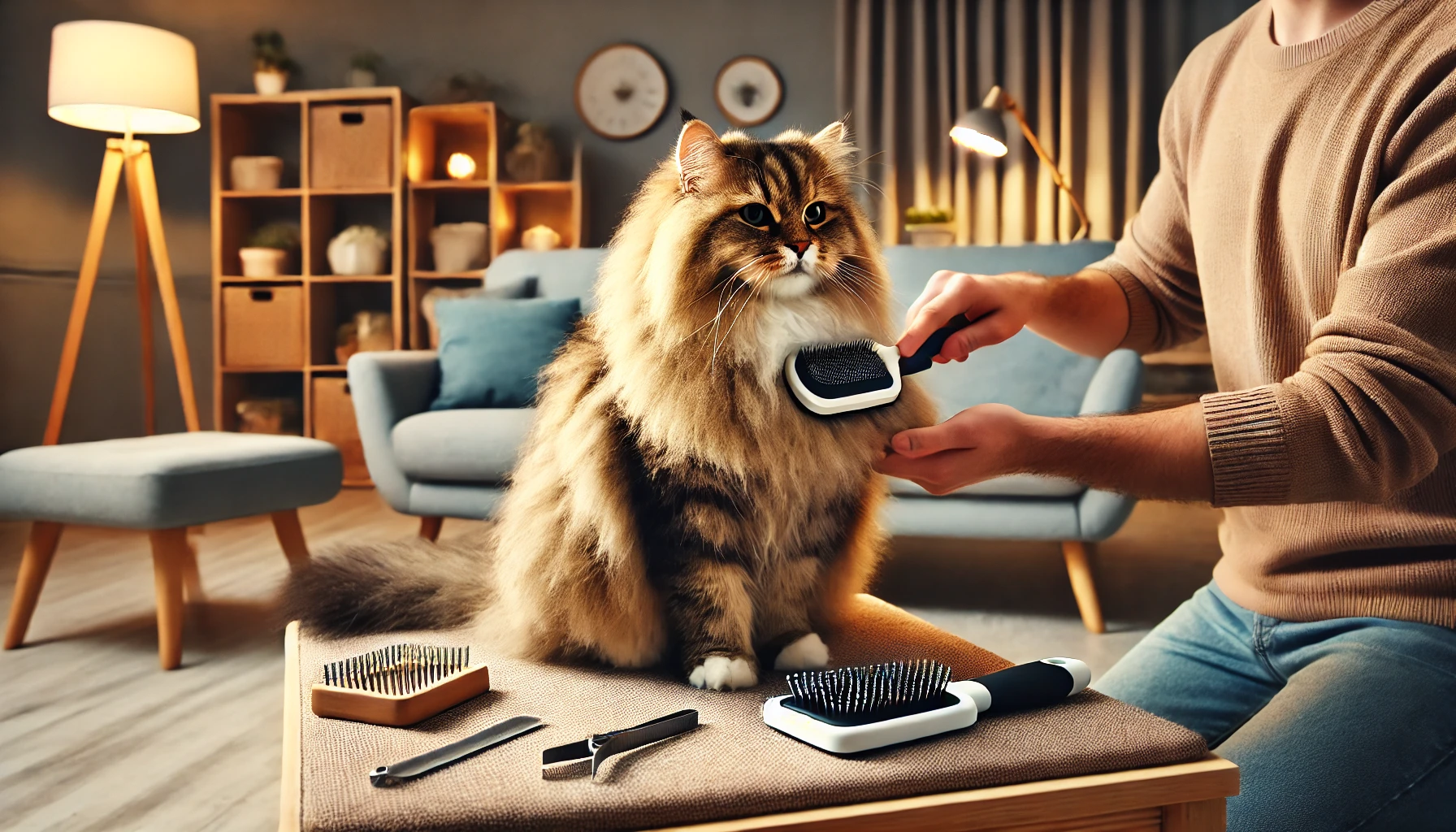
Grooming Tips for the Ragamuffin
Ragamuffin cats have a thick, plush coat that is silky to the touch and can easily mat if not properly maintained.
Regular grooming is essential to keep their coat in optimal condition.
Here are some grooming tips to help you care for your Ragamuffin:
- Brush your Ragamuffin’s coat at least 2-3 times a week to prevent mats and tangles.
- Work out tangles with your fingers, a wide-toothed comb, or a slicker brush designed for long-haired cats.
- More frequent brushing may be required during shedding season to manage excess fur.
- Check their ears regularly and clean them to prevent buildup and infections.
- Trim their nails every couple of weeks to prevent overgrowth and keep them healthy.
Ragamuffin cats shed moderately, so regular grooming reduces loose fur around the house and keeps them comfortable.
Grooming also provides a great opportunity for bonding between you and your Ragamuffin.
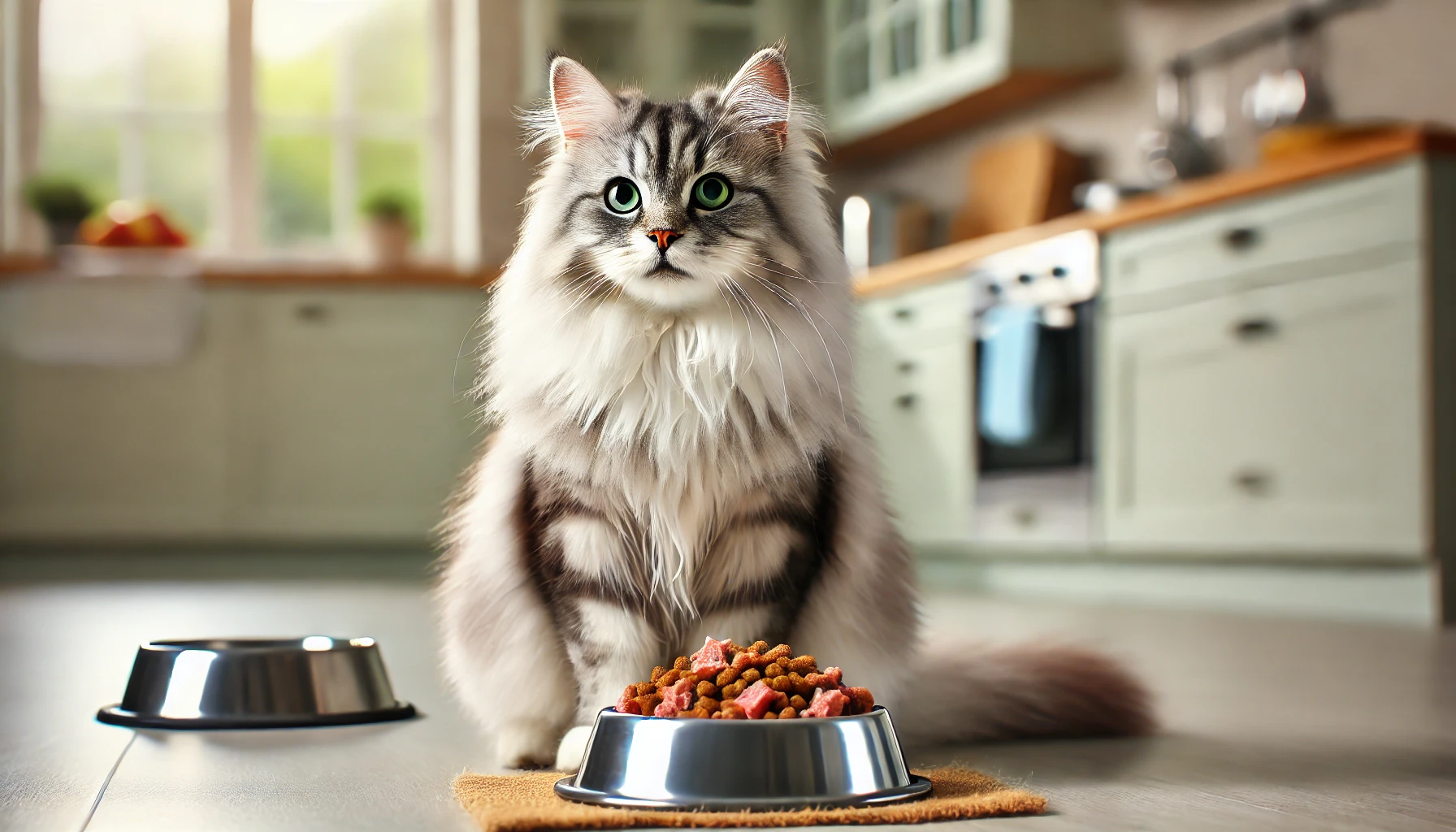
Diet and Nutrition Requirements
Diet is crucial for Ragamuffin cats, as they can easily become obese if overfed.
As large and easygoing cats, they need a balanced calorie intake to maintain their health:
- Choose high-quality cat food where protein is the top ingredient, and ensure the food is made with real meat as the first ingredient.
- Avoid overfeeding treats, as Ragamuffins can gain weight quickly.
- Include the right balance of fats, vitamins, and minerals to support their overall health, coat, and skin.
- Always provide fresh, clean water to keep them hydrated.
Consulting your veterinarian to develop the right diet plan for your Ragamuffin is recommended, especially if they have specific health concerns or nutritional needs.
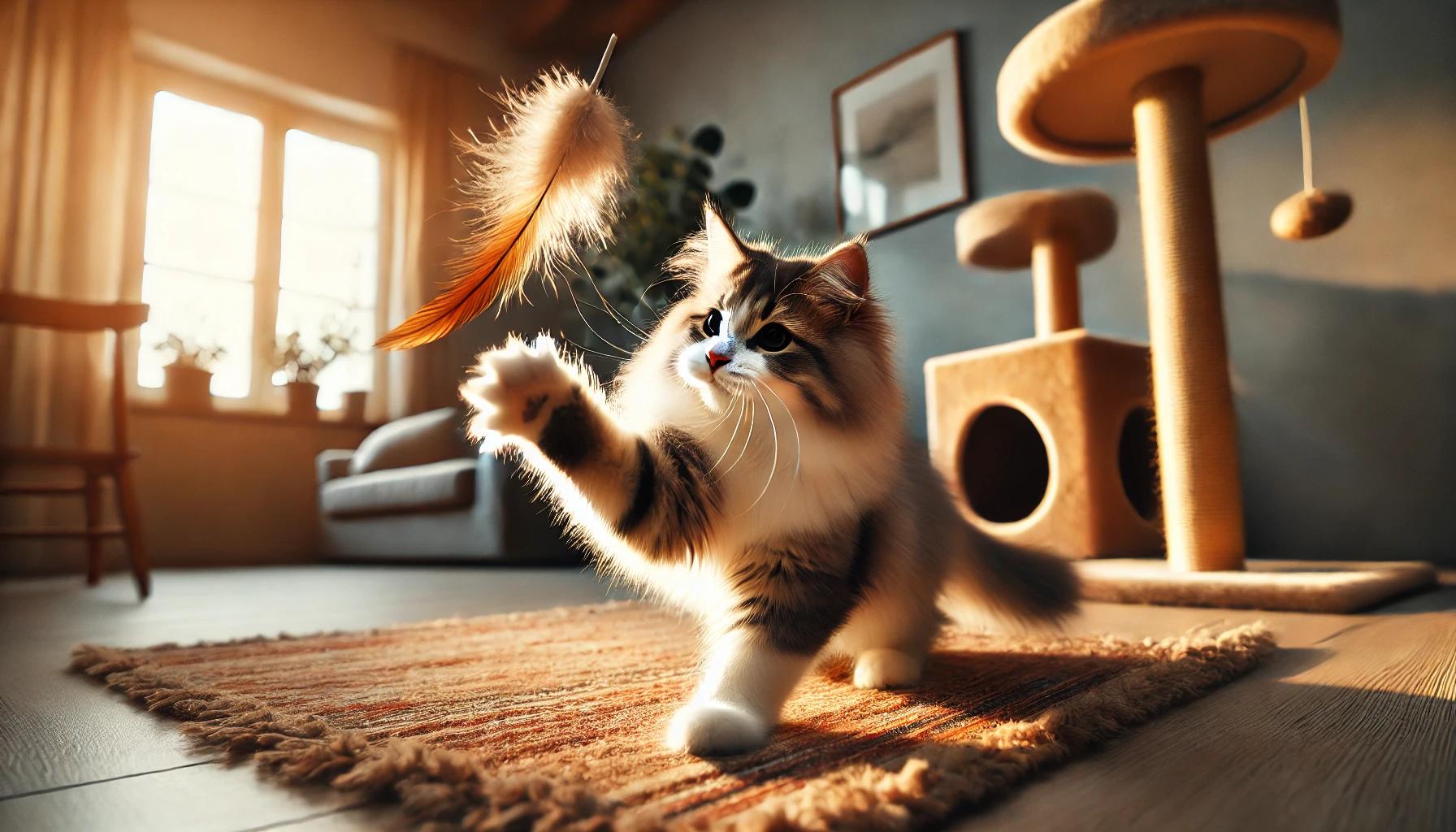
Exercise and Playtime Needs
Although laid-back, Ragamuffin cats still need regular exercise to stay fit and mentally stimulated.
Here are some ways to ensure they get enough physical activity:
- Interactive toys like feather wands or laser pointers can help them stay active and engaged.
- Regular play sessions of about 10-15 minutes twice a day will help prevent obesity and boredom.
- Cat trees or climbing structures allow Ragamuffins to stretch, climb, and explore.
Even though they are calm cats, it’s essential to provide them with a stimulating environment to keep them active and in good shape.
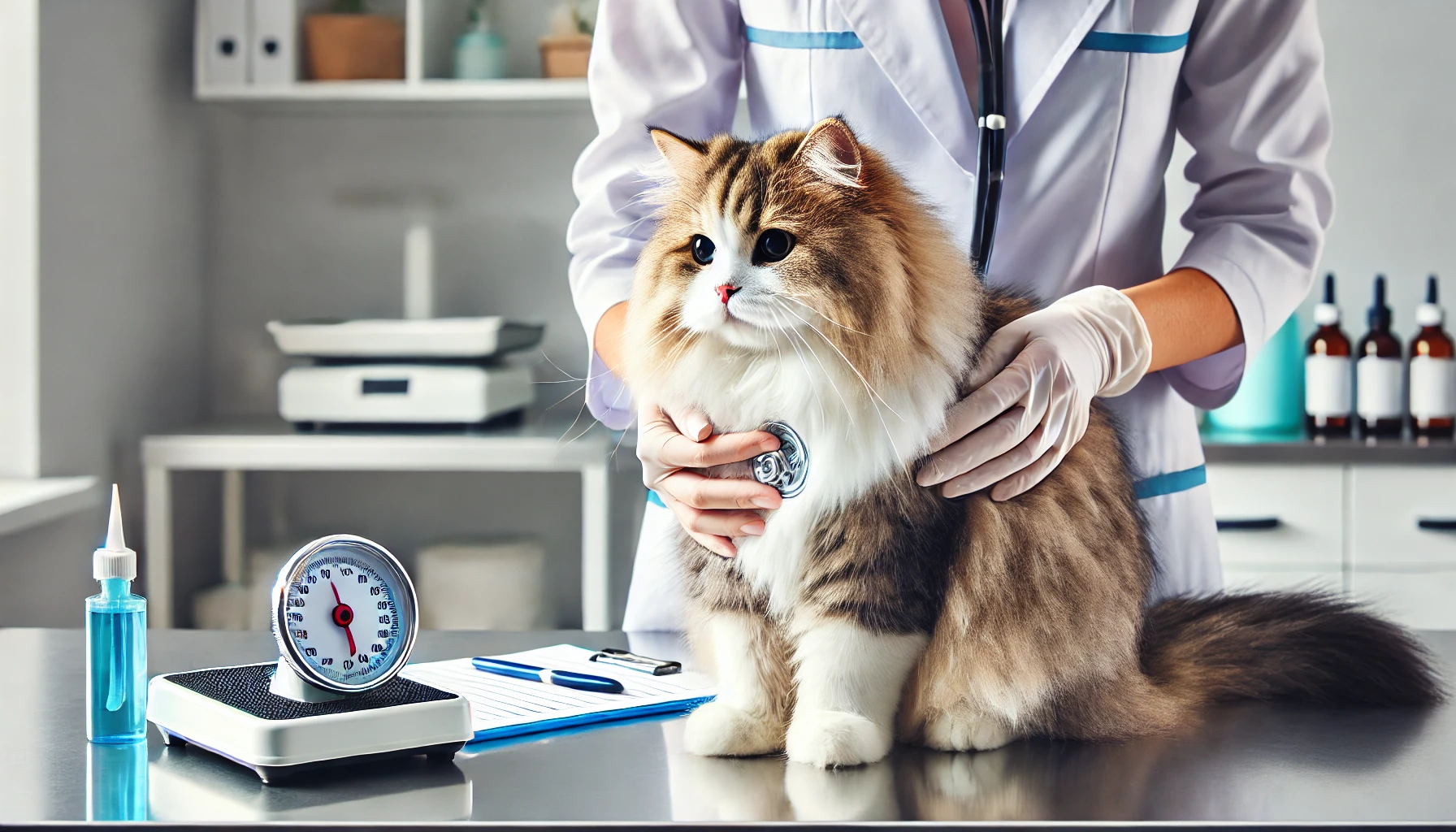
Common Health Issues
While Ragamuffin cats are generally a healthy breed, they can be prone to some common health concerns.
These include:
- Obesity: Their laid-back nature makes them susceptible to weight gain, so monitoring food intake and ensuring regular exercise is important.
- Hypertrophic Cardiomyopathy (HCM): This genetic heart condition can affect Ragamuffins, so regular vet checkups are essential to detect early signs.
- Dental Disease: Ragamuffins may suffer from dental problems, so regular teeth cleaning and dental checkups are recommended.
- Urinary Tract Issues: Keeping them hydrated and providing proper nutrition can help prevent urinary problems.
Routine veterinary checkups and preventative care are key to ensuring that your Ragamuffin stays healthy and happy.
Being aware of potential health issues and addressing them early can make a significant difference in their quality of life.
Proper care, including grooming, a balanced diet, and sufficient exercise, is key to maintaining a healthy and happy Ragamuffin cat.
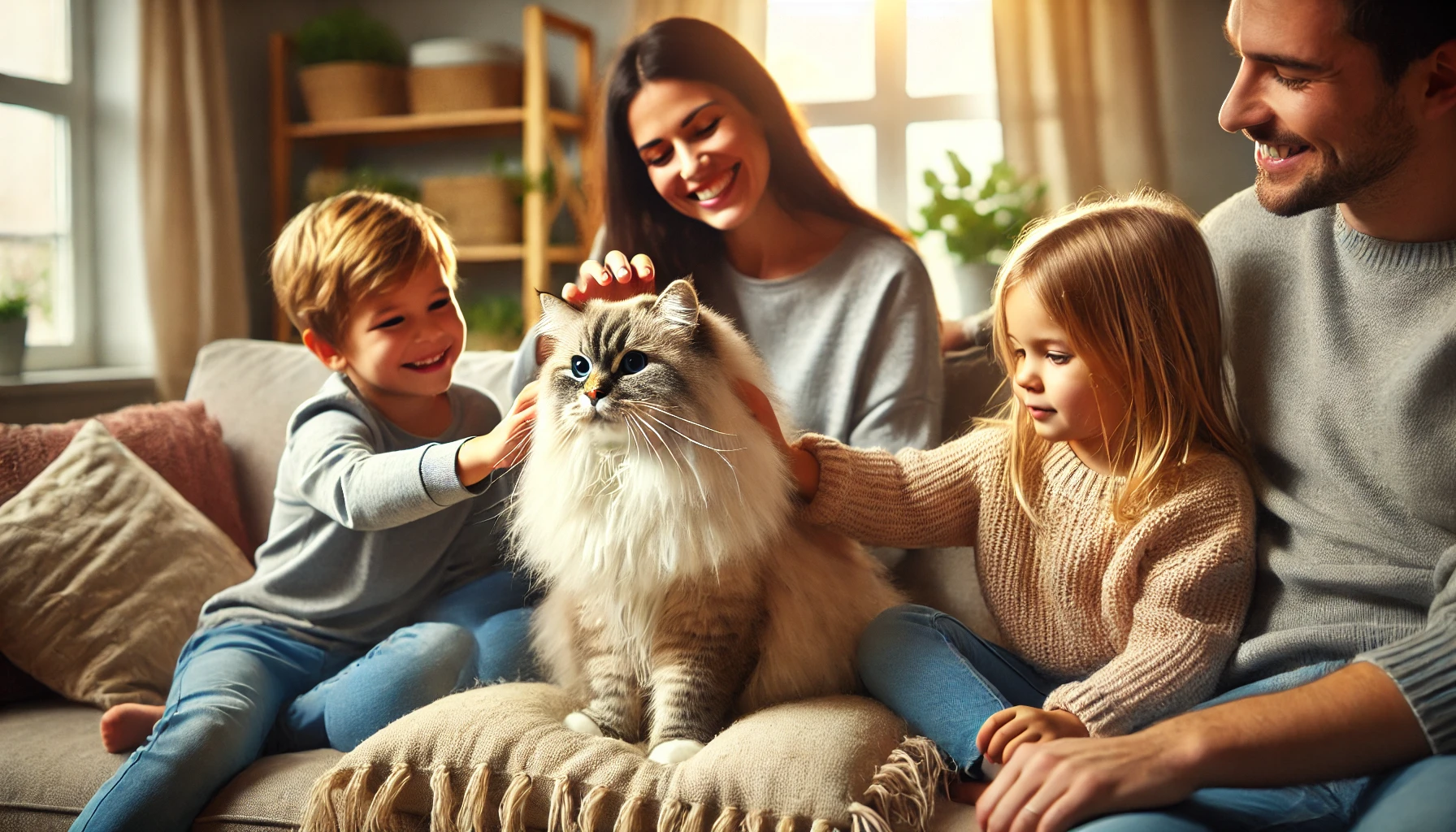
Why Ragamuffin Cats Are Such Great Family Companions
Ragamuffin cats are often considered the ultimate family cats for one simple reason: they are incredibly friendly, affectionate, and easygoing.
These gentle giants get along well with children and other pets, making them an ideal addition to a loving family.
Their social nature and adaptability to various environments make them highly suitable for family life, and they thrive on human interaction and companionship.
Let’s take a closer look at why Ragamuffin cats are one of the best options for families.
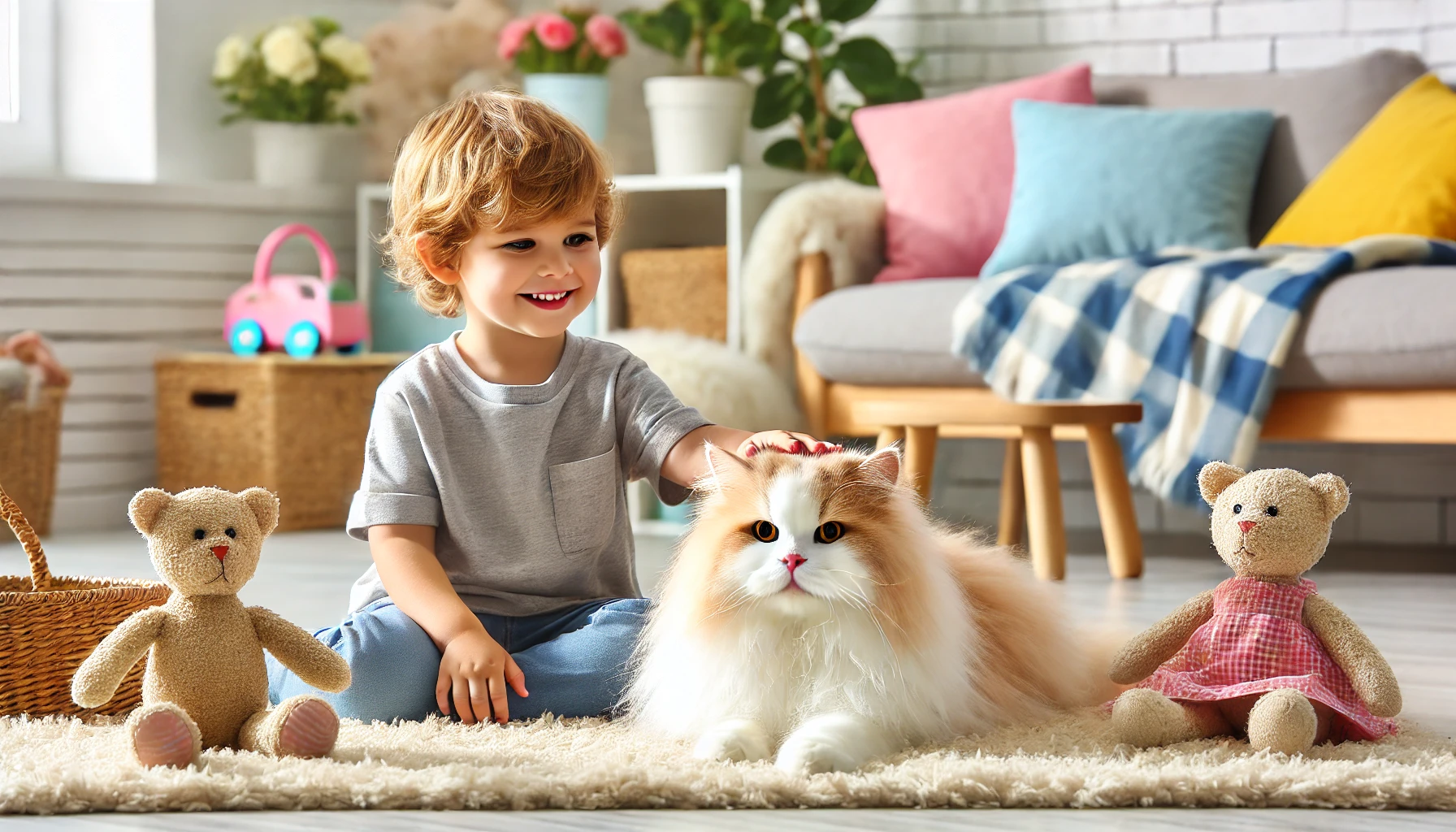
Ragamuffins and Children
Ragamuffin cats are highly patient and gentle, making them excellent companions for children of all ages.
Their laid-back nature allows them to tolerate the high-energy play of younger children, such as being petted and hugged.
Instead of becoming aggressive, Ragamuffins tend to remain passive, making them a very loving and safe pet to have around children.
They also enjoy attention from older children who may want to spend time playing or cuddling with them.
However, it is always important to teach children how to handle cats with care and respect to avoid stressing even the most tolerant of pets.
The docile nature of the Ragamuffin cat makes this process easier for families, as they are not easily startled or aggressive.
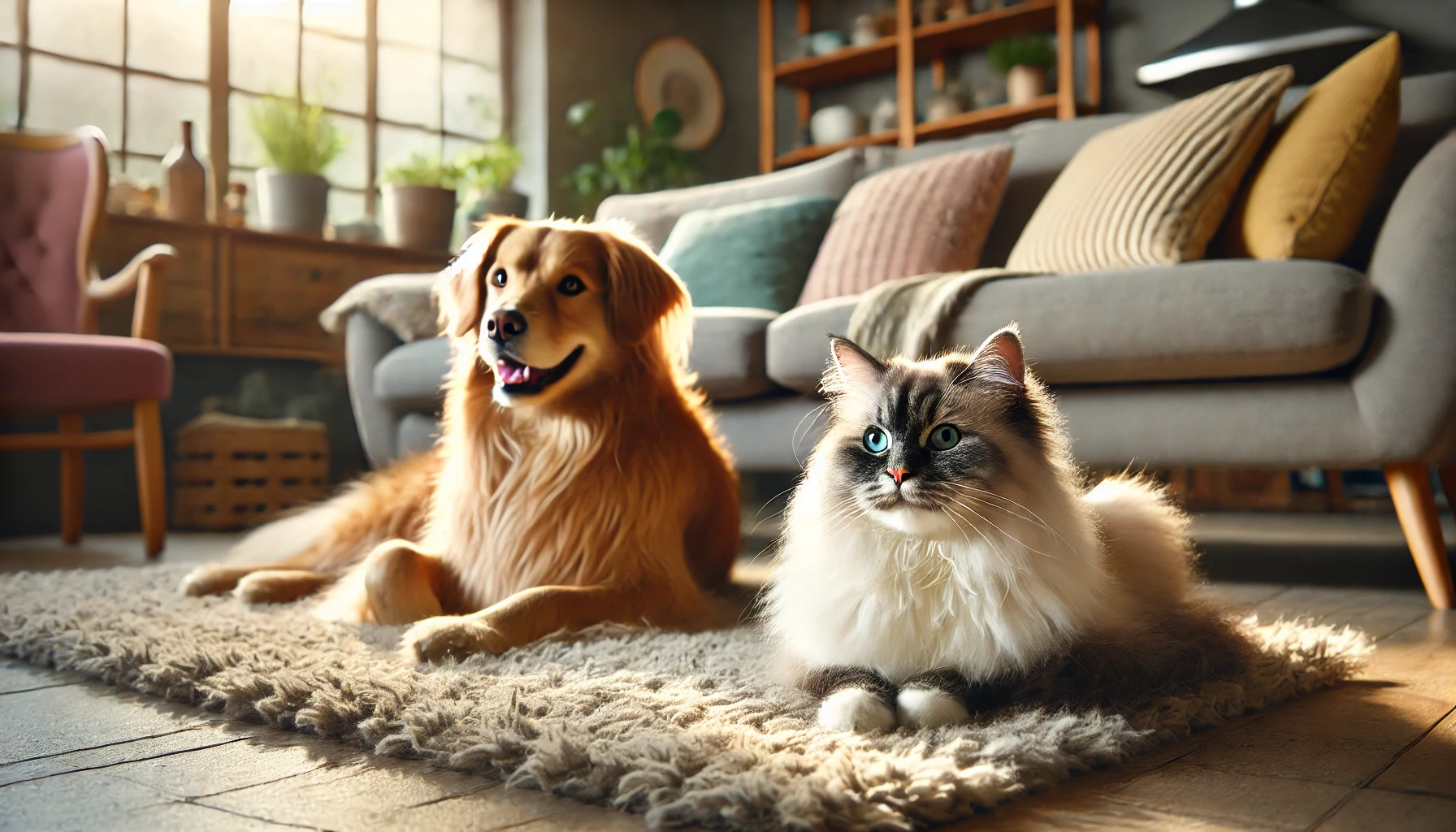
Living with Other Pets
Another reason Ragamuffin cats do well in families is their ability to get along with other pets, including dogs and other cats.
Since they are not territorial and show no aggression, they usually adjust well to homes with other pets.
Their laid-back and friendly demeanor allows them to live in harmony with other animals, and they often form strong bonds with their fellow companions.
For a smooth transition, it is best to introduce your Ragamuffin to other pets gradually and in a controlled environment.
This helps them get used to the new surroundings and establish healthy relationships with other animals in the household.
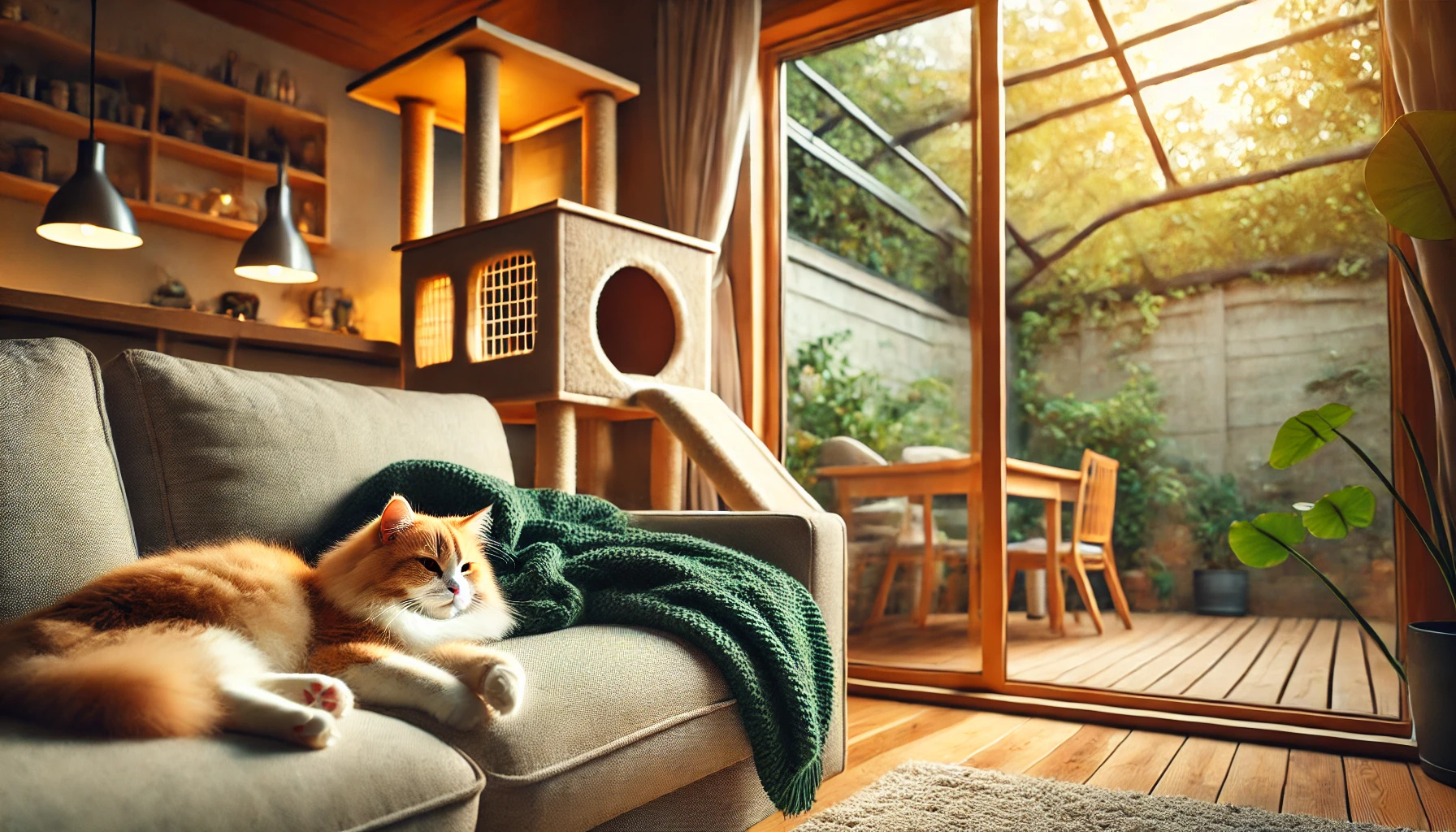
Indoor vs. Outdoor Living for Ragamuffins
The calm nature of a Ragamuffin, along with their attachment to human family members, makes them well-suited for indoor living.
As an indoor cat, a Ragamuffin will appreciate lounging in cozy spots around the house, interacting with family members, and playing with toys.
While some cats may enjoy being outdoors, this breed is better suited to indoor environments, which ensures their safety and security.
If you want to give your Ragamuffin some outdoor time, it’s best to create an escape-proof outdoor area or an enclosed space where they can explore safely.
A catio or leash training can be excellent ways to allow your Ragamuffin to enjoy the fresh air while staying safe.
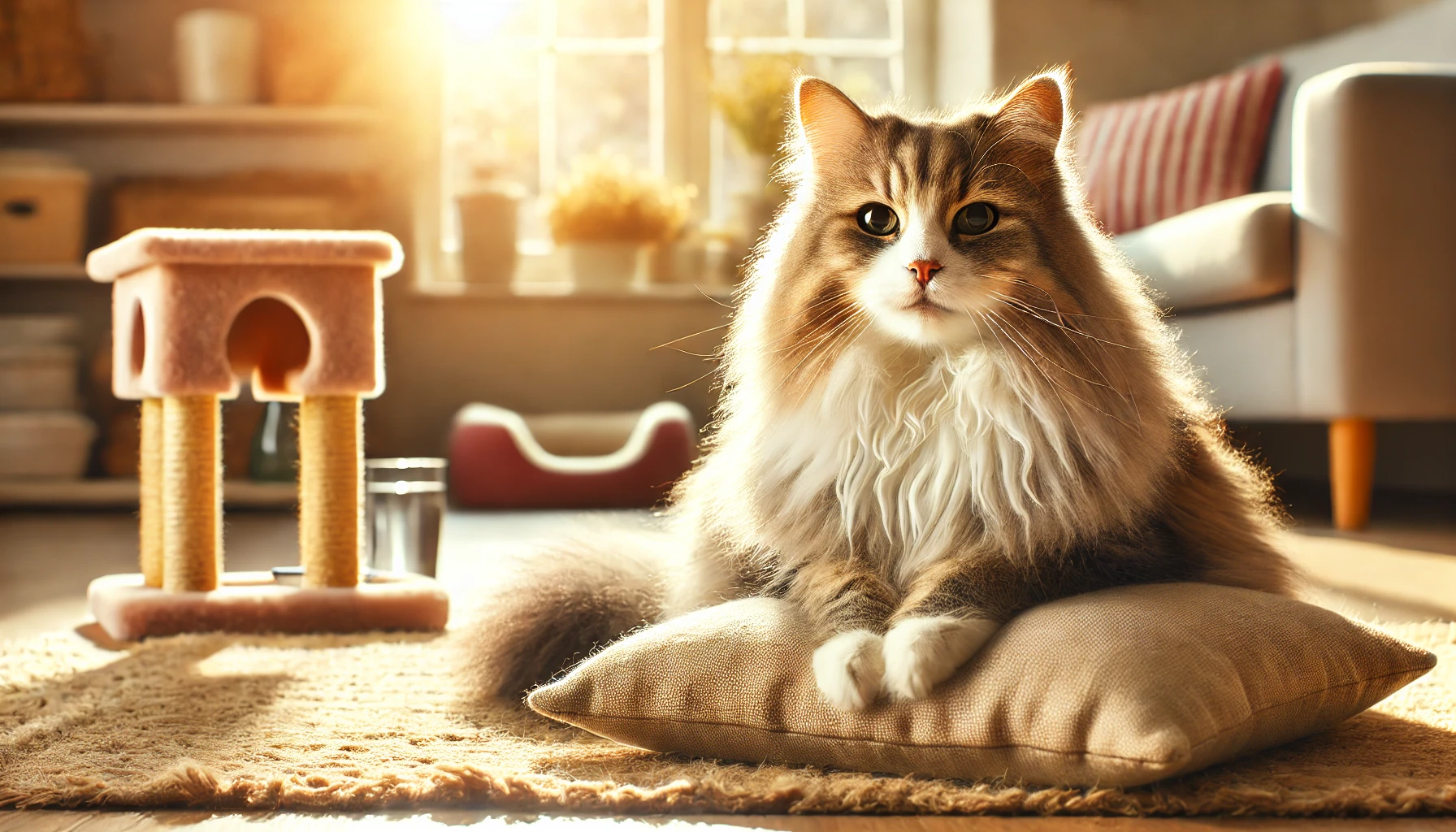
Lifespan and Longevity of Ragamuffins
Ragamuffins are known for their long lifespan, typically living between 12 to 16 years or even longer with proper care.
Their robust health, combined with their gentle and calm nature, contributes to their longevity.
To ensure your Ragamuffin leads a healthy life, regular veterinary checkups, a nutritious diet, and sufficient physical activity are essential.
Ragamuffins are capable of forming deep emotional bonds with their human families, and their loyal nature makes them wonderful lifelong companions.
This long-term companionship is one of the many reasons families choose Ragamuffin cats as their pets.
Ragamuffin cats are ideal family pets due to their friendly, tolerant, and affectionate nature, making them perfect companions for both children and other pets.
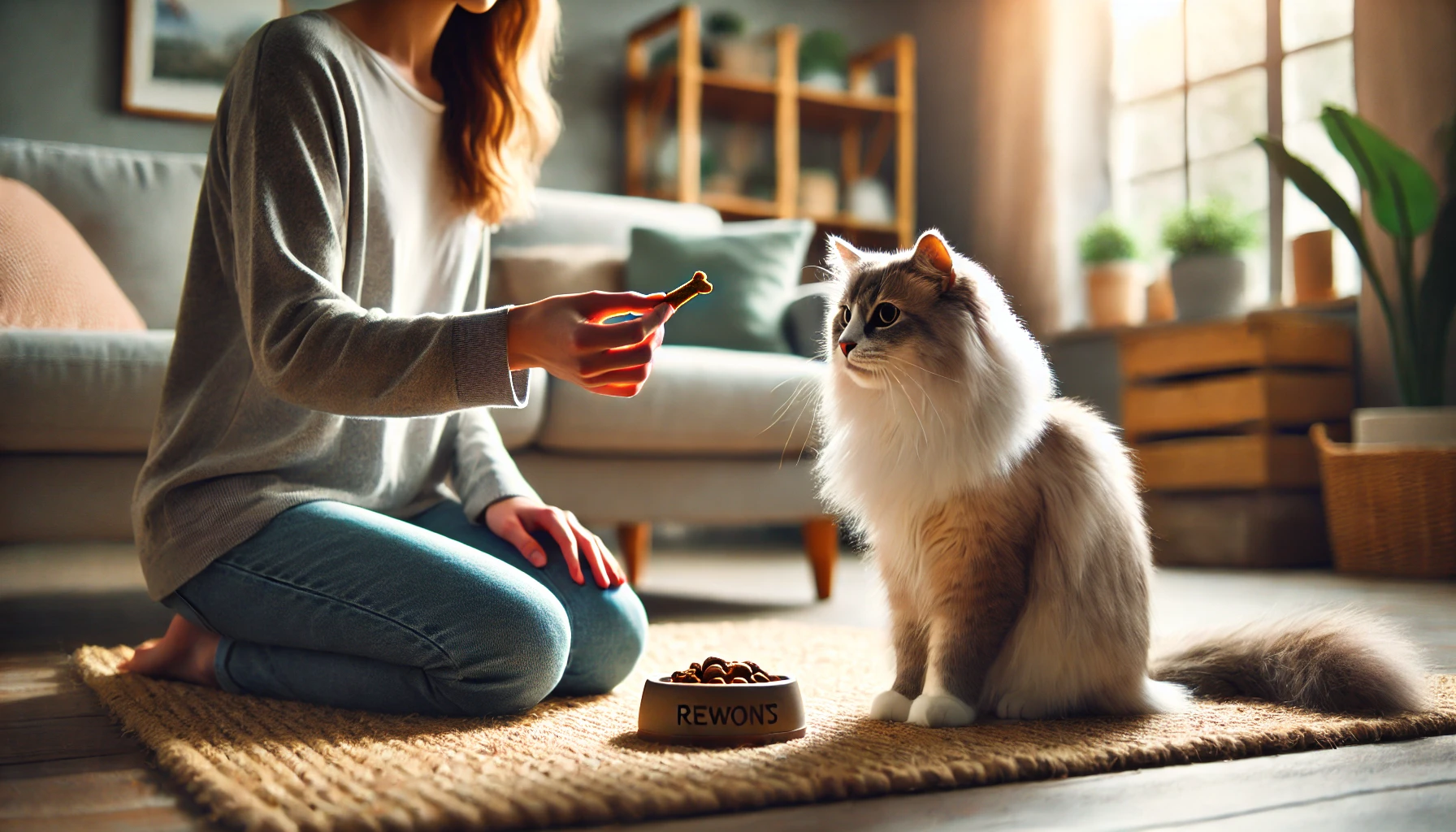
Training Your Ragamuffin Cat
Because of the laid-back and easygoing nature of Ragamuffin cats, it may seem like they don’t need training, but in fact, they are very intelligent cats and can learn several commands and tricks with the proper approach.
While they may not be as energetic as other breeds, their love for human interaction makes them eager to please, which is a big advantage during training.
Training your Ragamuffin will mentally stimulate them and help reinforce the bond between you and your pet.
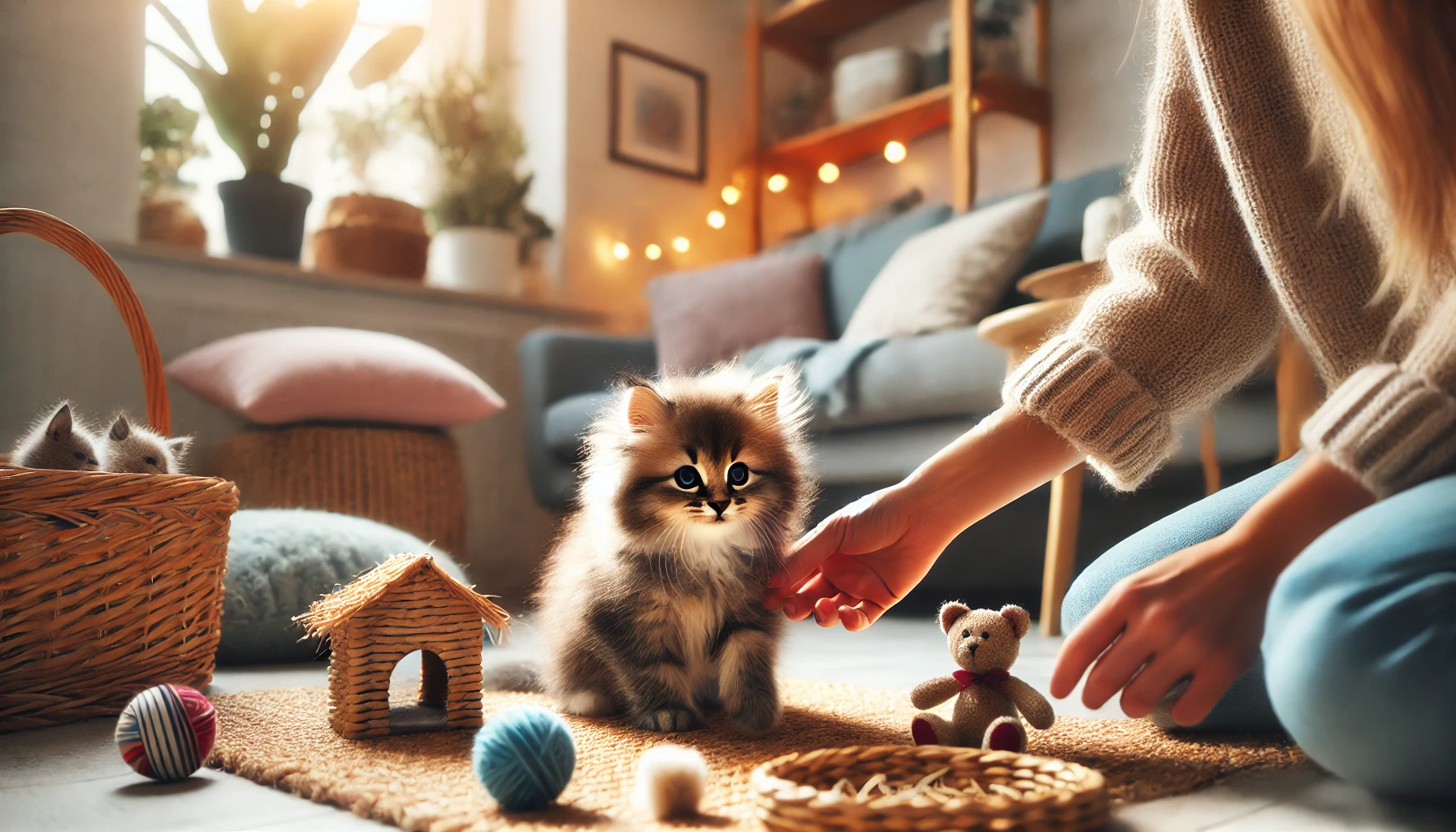
Socialization and Early Training
The key to raising a well-behaved Ragamuffin lies in early socialization and training.
From kittenhood, your cat should be exposed to people, different environments, and sounds so that they can easily adapt to various situations as they grow older.
Early socialization reduces anxiety and helps your Ragamuffin become more adaptable.
- Introduce your Ragamuffin kitten to new environments, such as different rooms or safe outdoor spaces.
- Expose them to household noises, such as vacuum cleaners, doorbells, or kitchen appliances, to prevent fear or anxiety later on.
- Allow your kitten to be handled gently by different family members, including children, so they become comfortable with touch.
Socialization helps build confidence in Ragamuffins and allows them to adjust successfully to new situations, making them a great addition to your family.
Teaching Tricks and Commands
Ragamuffin cats can be trained to perform tricks and follow commands if adequately motivated.
They respond well to positive reinforcement, so reward them with treats, praise, or affection when they do something correctly:
- Come when called: Call your Ragamuffin by name and reward them when they come to you.
- High five: Hold a treat in your hand and wait for your Ragamuffin to tap your hand with their paw. Reward them immediately when they do.
- Sit: Hold a treat above your Ragamuffin’s head and slowly move it back so they sit naturally. Reward them as soon as they sit.
Consistency is key when teaching tricks and commands.
Short training sessions of about 5-10 minutes will keep your Ragamuffin engaged without overwhelming them.
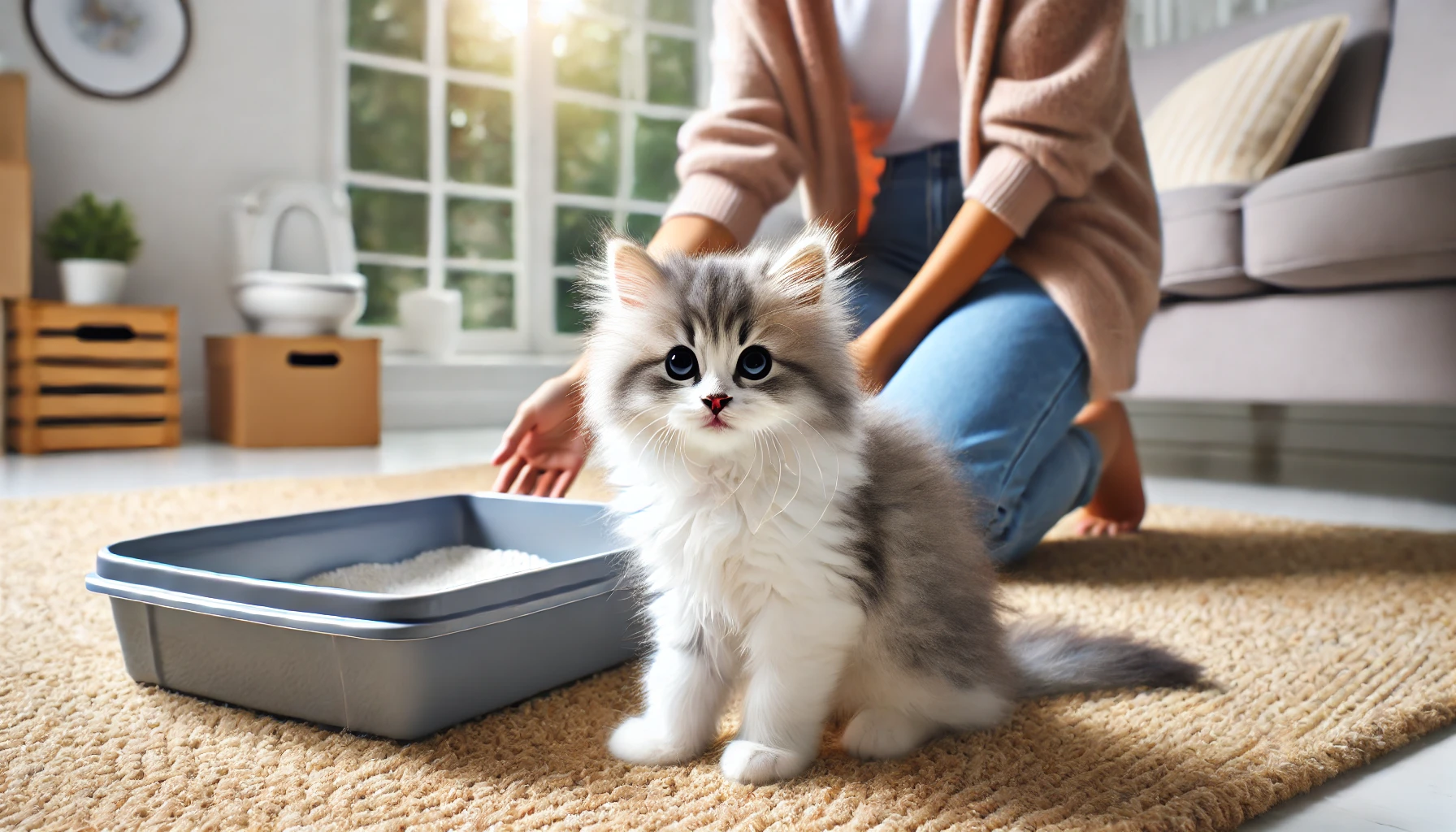
Litter Training a Ragamuffin
Litter training is relatively easy with Ragamuffins, as they instinctively bury their waste.
Here are a few tips for effective litter training:
- Place the litter box in a quiet, accessible location where your cat feels secure.
- Keep the litter box clean to avoid aversion.
- If training a kitten, place them in the litter box after meals or naps to familiarize them with it.
- Reward your Ragamuffin with treats or praise after they use the litter box successfully.
Most Ragamuffins pick up litter training quickly, but patience and consistency are key, especially with kittens.
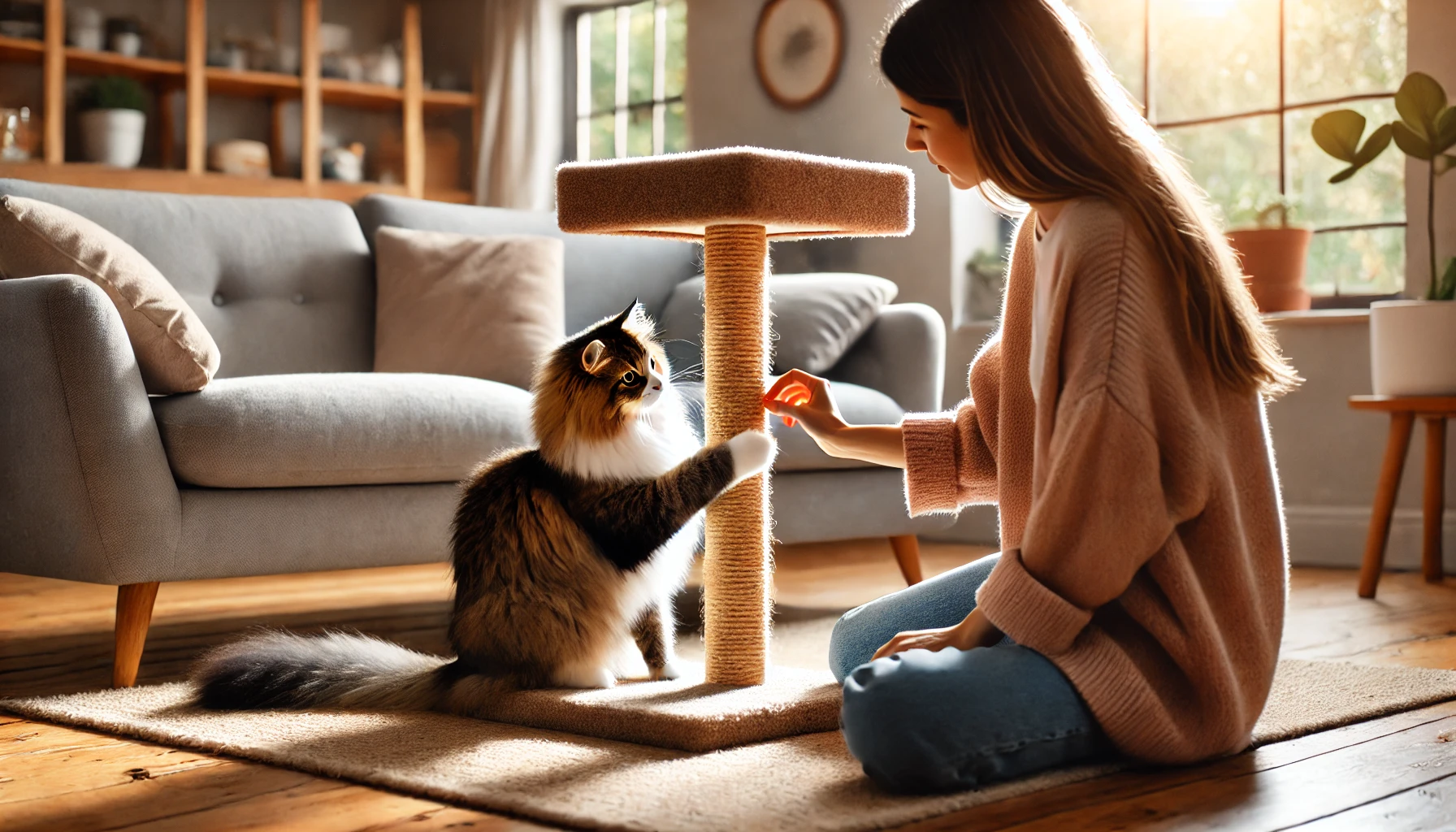
Behavioral Issues and Solutions
Like all cat breeds, Ragamuffins can occasionally develop behavioral issues, such as scratching furniture or excessive meowing.
Understanding the cause of these behaviors and addressing them early can prevent long-term problems:
- Scratching furniture: Provide plenty of scratching posts around the house to deter your Ragamuffin from using furniture.
- Excessive meowing: Ensure your cat’s basic needs, such as food, water, and attention, are met. Persistent meowing may indicate boredom or stress.
- Separation anxiety: Ragamuffins are social cats and may experience anxiety when left alone for extended periods. Providing toys and enrichment activities can help keep them calm.
Address these behaviors with positive reinforcement and by creating an enriching environment to keep your Ragamuffin happy and well-behaved.
Ragamuffins are intelligent and trainable, and they respond well to positive reinforcement, making training sessions enjoyable for both cats and owners.
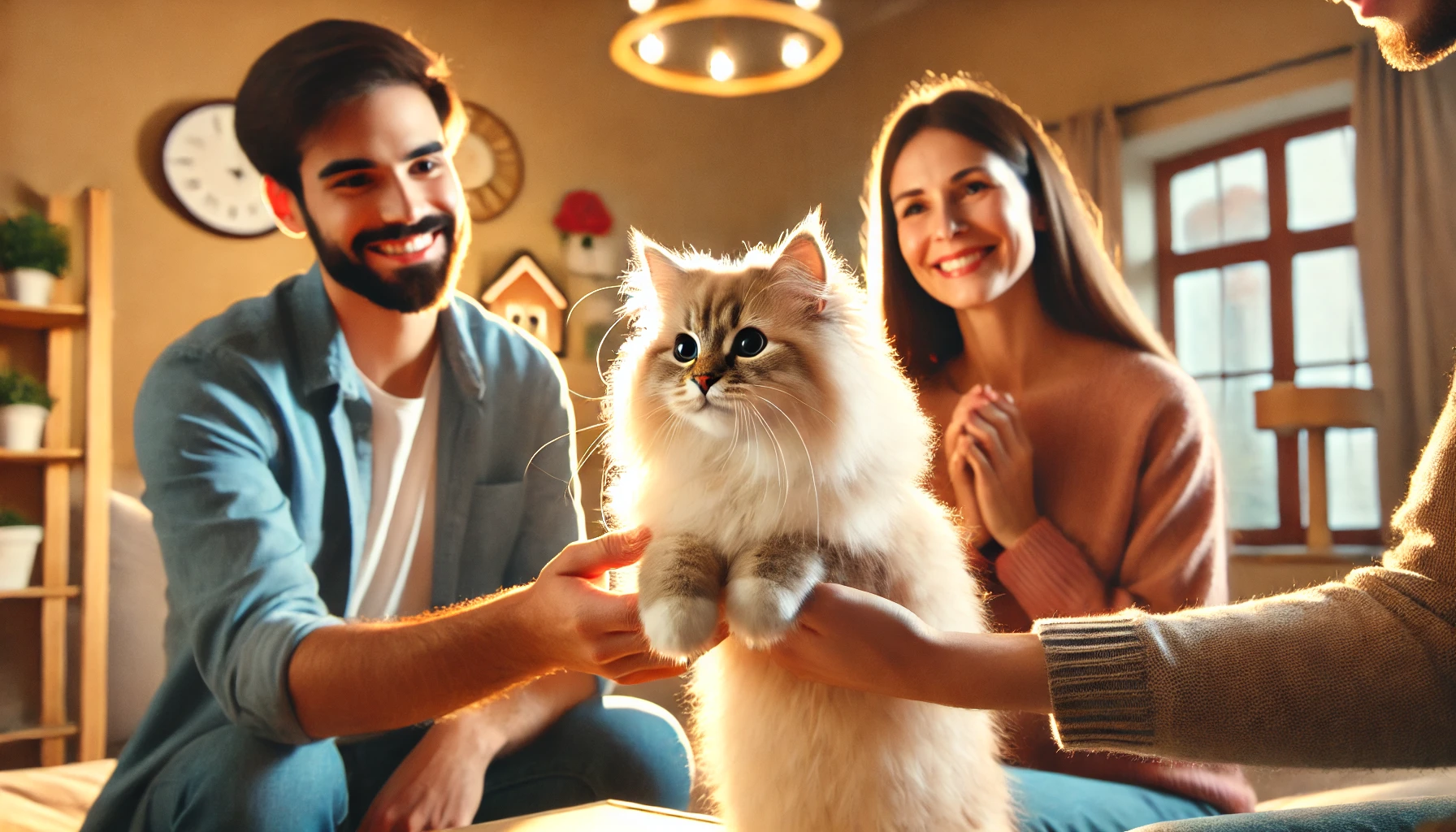
Adopting a Ragamuffin Cat
Adopting a Ragamuffin cat into your home can be incredibly rewarding, as their affectionate and gentle nature makes them excellent companions.
However, before adopting a Ragamuffin, it’s essential to ensure that both you and your new pet are prepared for the transition.
From finding a reputable breeder or shelter to understanding the responsibilities of caring for a Ragamuffin, this section will guide you through the process of adopting one of these beautiful cats.
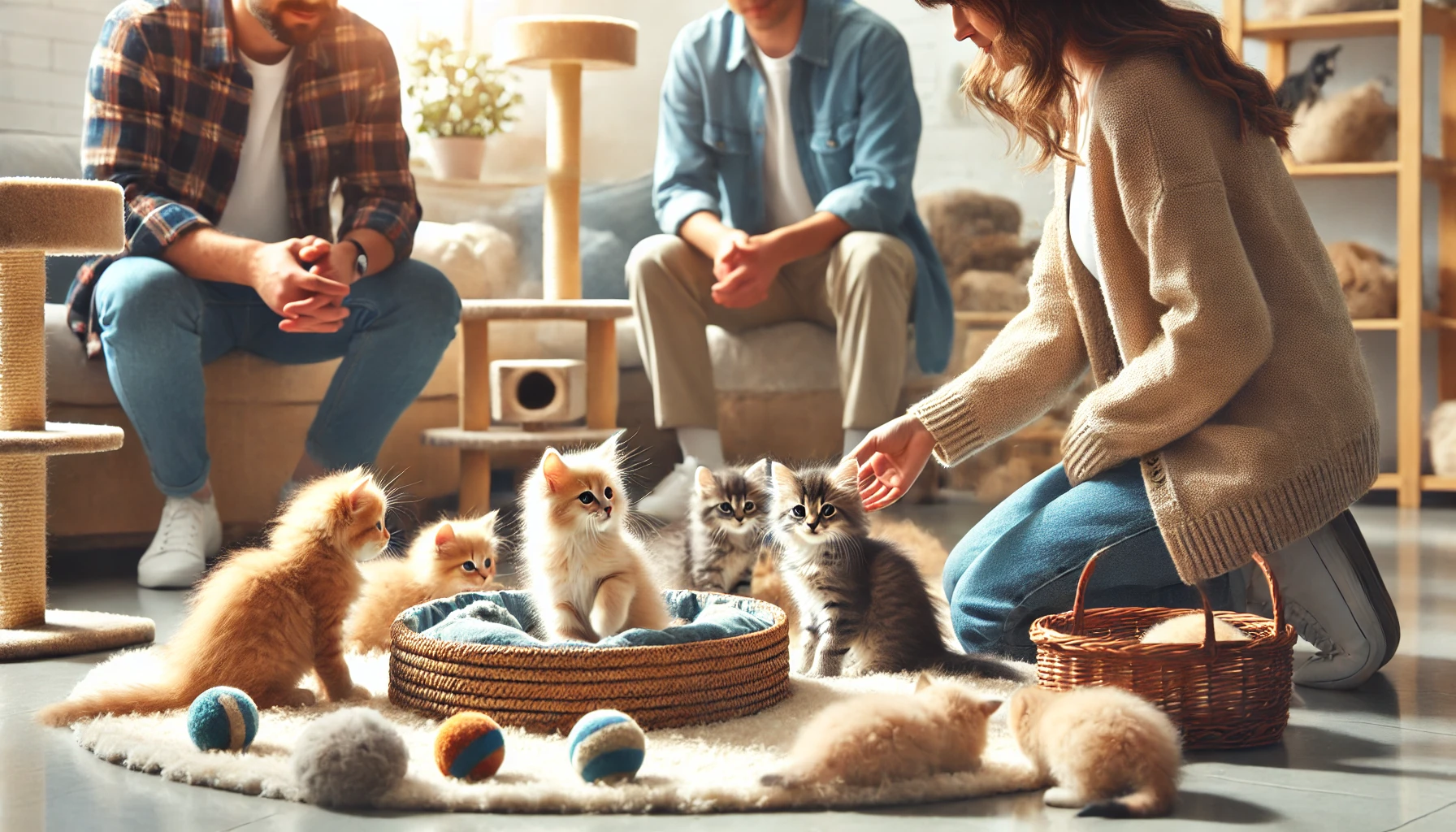
Where to Find Ragamuffin Kittens
The first step in adopting a Ragamuffin is researching breeders or shelters to find a reputable source.
A good breeder will follow ethical practices and ensure that the kittens are healthy both physically and mentally.
You can also explore breed-specific rescues or local shelters for Ragamuffins in need of homes:
- Breeders: Make sure the breeder is registered with recognized cat associations, such as The International Cat Association (TICA) or the Cat Fanciers’ Association (CFA). Ensure the breeder provides health clearances for common genetic conditions, such as Hypertrophic Cardiomyopathy (HCM).
- Rescues: Breed-specific rescues, such as those focusing on Ragamuffin cats, are great options if you prefer adopting an adult cat.
- Local Shelters: While Ragamuffins are less common in shelters, you might find one in need of a second chance, making shelter adoption a wonderful option.
Whether adopting from a breeder or shelter, take your time to ensure that the kitten or cat is healthy and well-cared for before finalizing your decision.
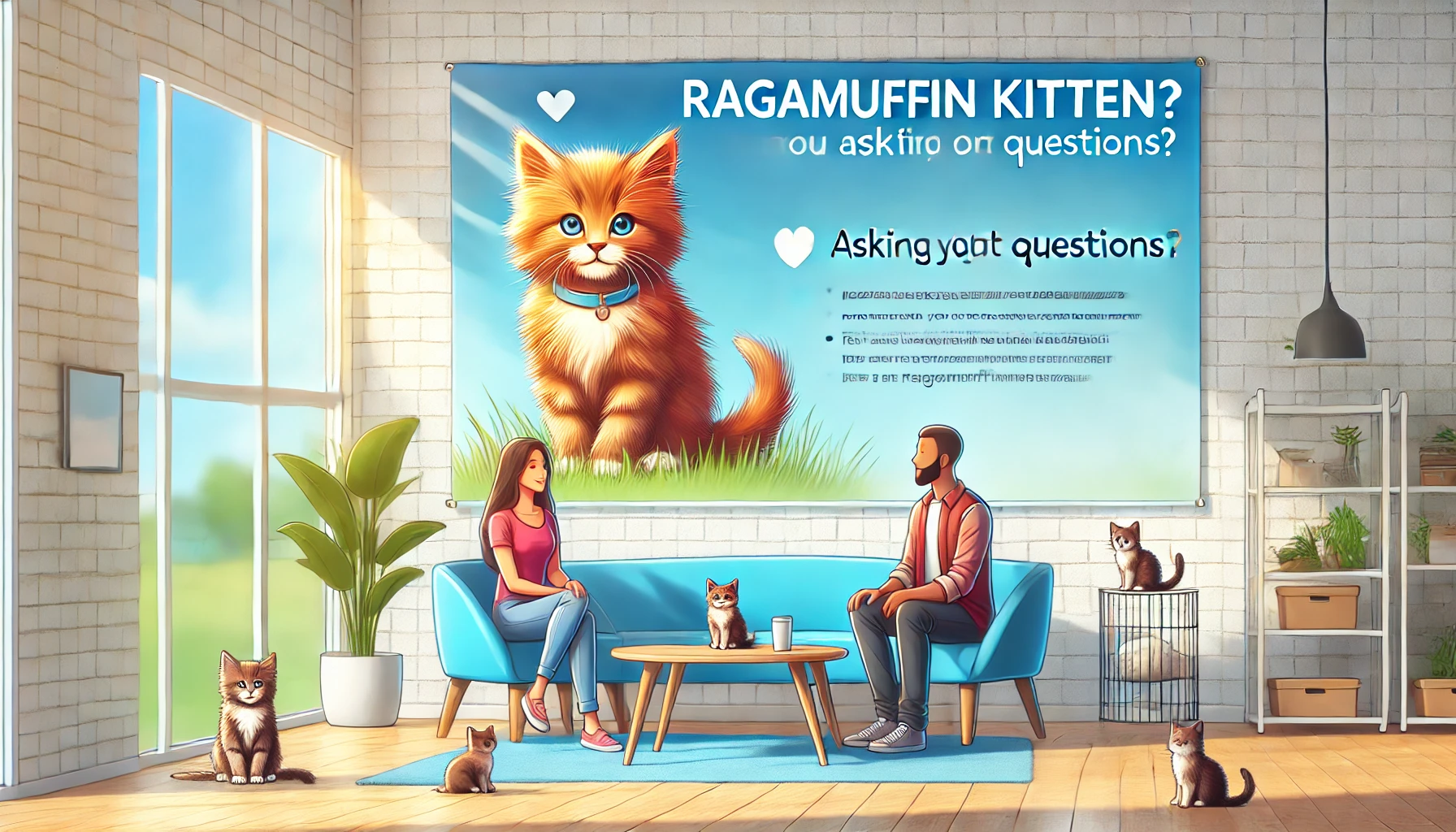
Questions to Ask Breeders or Shelters
Before adopting a Ragamuffin, it’s crucial to ask the right questions to ensure you’re bringing home a healthy, well-adjusted cat.
Some important questions to ask include:
- Health history: Inquire about the cat’s vaccinations, deworming, and any genetic concerns associated with the breed.
- Temperament: Ask about the cat’s personality to ensure they will fit well with your family and other pets.
- Breeding practices: For breeders, ask about their breeding program and how they ensure the health and well-being of their cats.
- Socialization: Find out how the kittens have been socialized and if they have been exposed to children, pets, and different environments.
- Return policy: Ensure that the breeder or shelter has a return policy in case the adoption does not work out.
Asking these questions will help you make an informed decision and adopt from a responsible source.
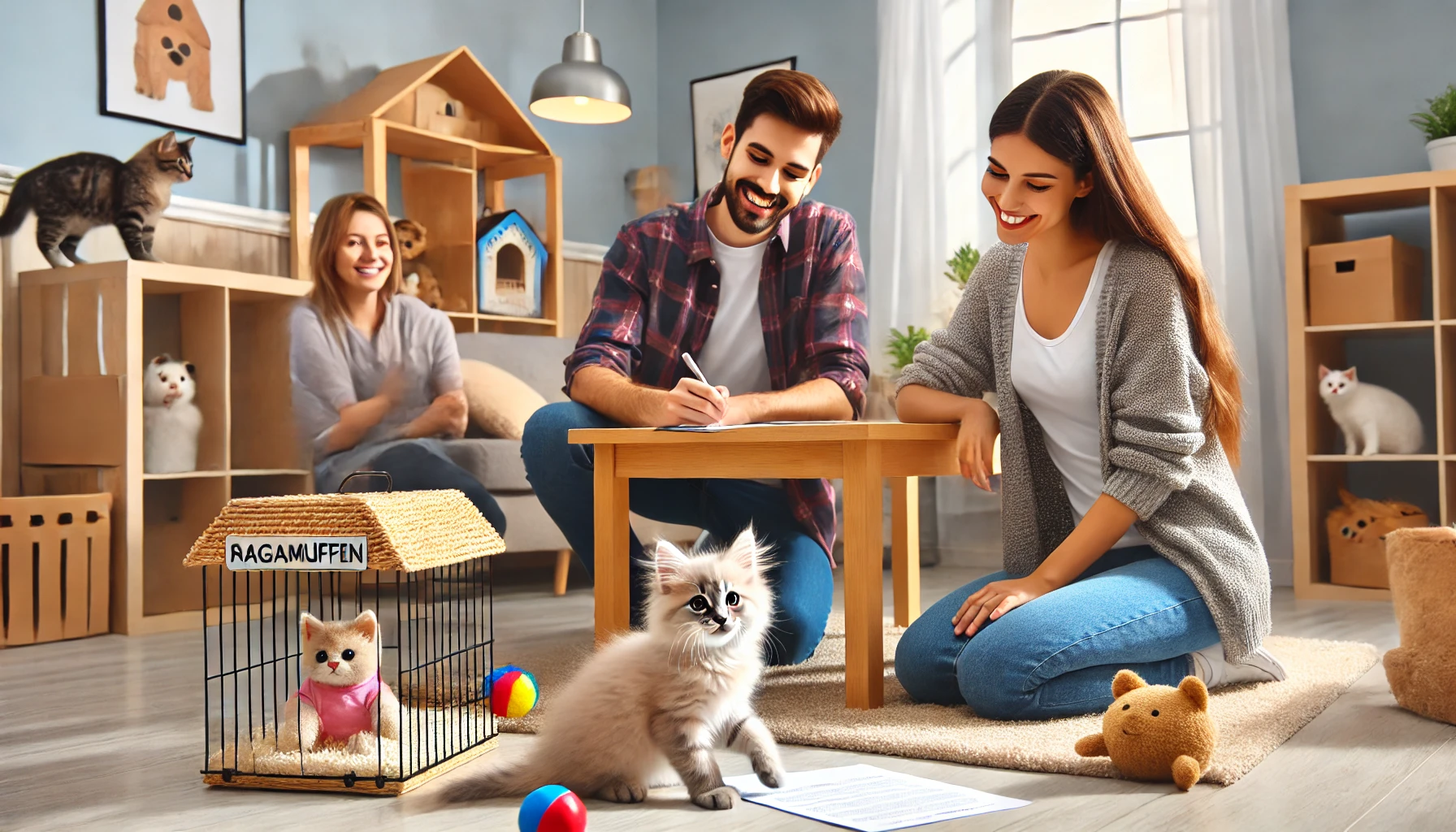
The Adoption Process Explained
Adopting a Ragamuffin involves several steps to ensure a smooth transition for both you and the cat.
Here’s what to expect during the adoption process:
- Preliminary inquiry: Contact the breeder or shelter to express your interest in adopting a Ragamuffin and ask any questions you may have.
- Application: Many breeders and shelters require an application to ensure a good match between the cat and the new owner.
- Home visit: Some breeders or rescues may visit your home to ensure that it is suitable for a Ragamuffin cat.
- Adoption fee: Be prepared to pay an adoption fee, which usually covers initial vaccinations, spaying/neutering, and other medical expenses.
- Finalizing the adoption: Once approved, you can bring your new Ragamuffin home. Make sure you have all necessary supplies, such as food, a litter box, and a comfortable bed, ready for their arrival.
Following these steps will ensure that the adoption process goes smoothly and that your Ragamuffin is set up for success in their new home.
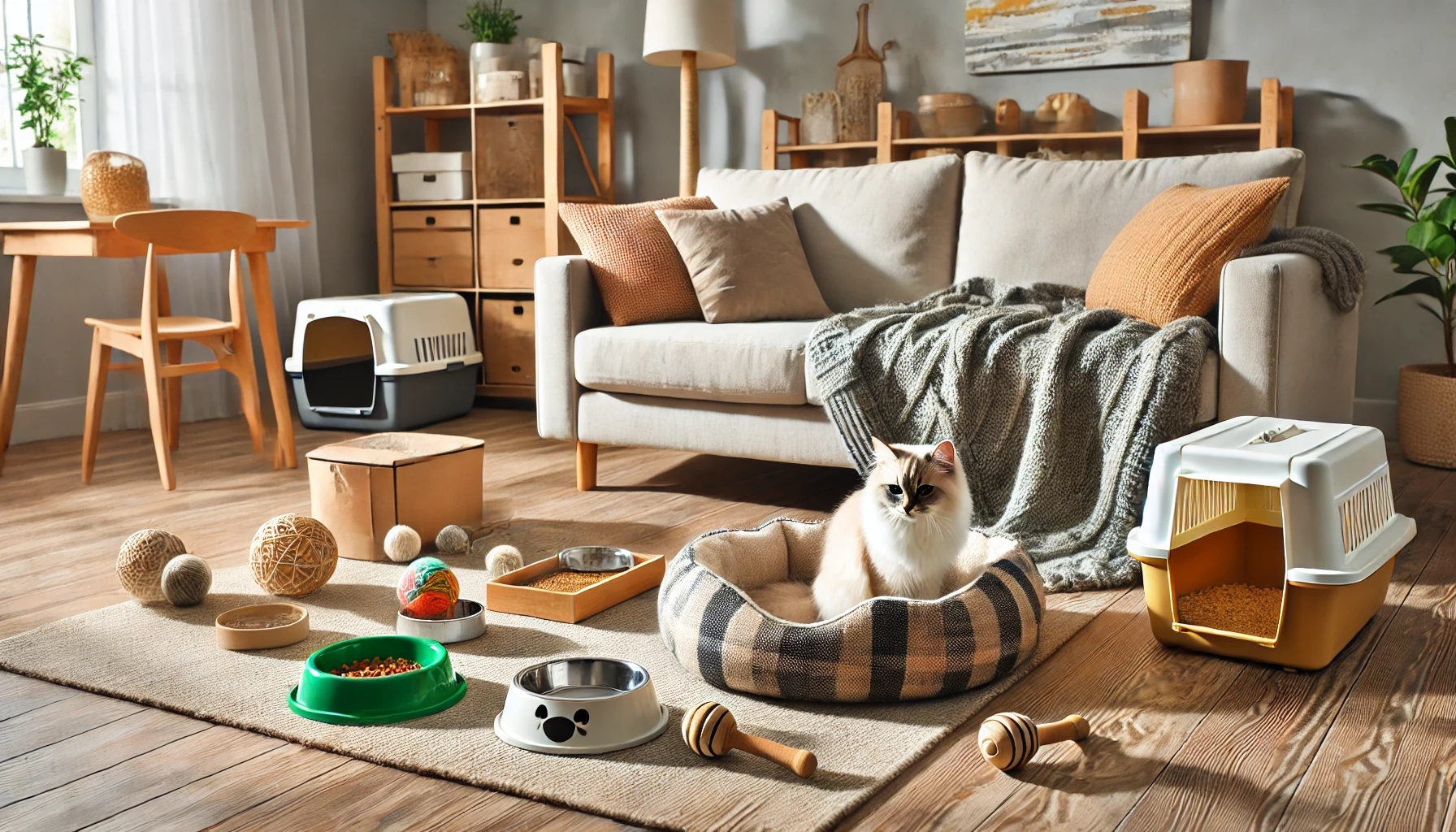
Preparing Your Home for a Ragamuffin
Before bringing your new Ragamuffin home, make sure your space is ready for them.
Here are a few steps to prepare your home:
- Provide a safe space: Set up a designated area where your Ragamuffin can retreat and feel secure, especially during the transition period.
- Stock up on supplies: Have all the essentials ready, including food and water bowls, a litter box, scratching posts, toys, and a comfortable bed.
- Cat-proof your home: Remove potential hazards, such as toxic plants, dangling cords, or small objects that could be swallowed.
- Gradual introduction: If you have other pets, introduce them to your Ragamuffin slowly and in a neutral area to avoid stress or territorial behavior.
Preparing your home properly will help your Ragamuffin adjust quickly and comfortably, giving them the best start in their new life with you.
Adopting a Ragamuffin from a responsible breeder or rescue is a rewarding experience, ensuring you bring home a healthy, well-socialized cat.
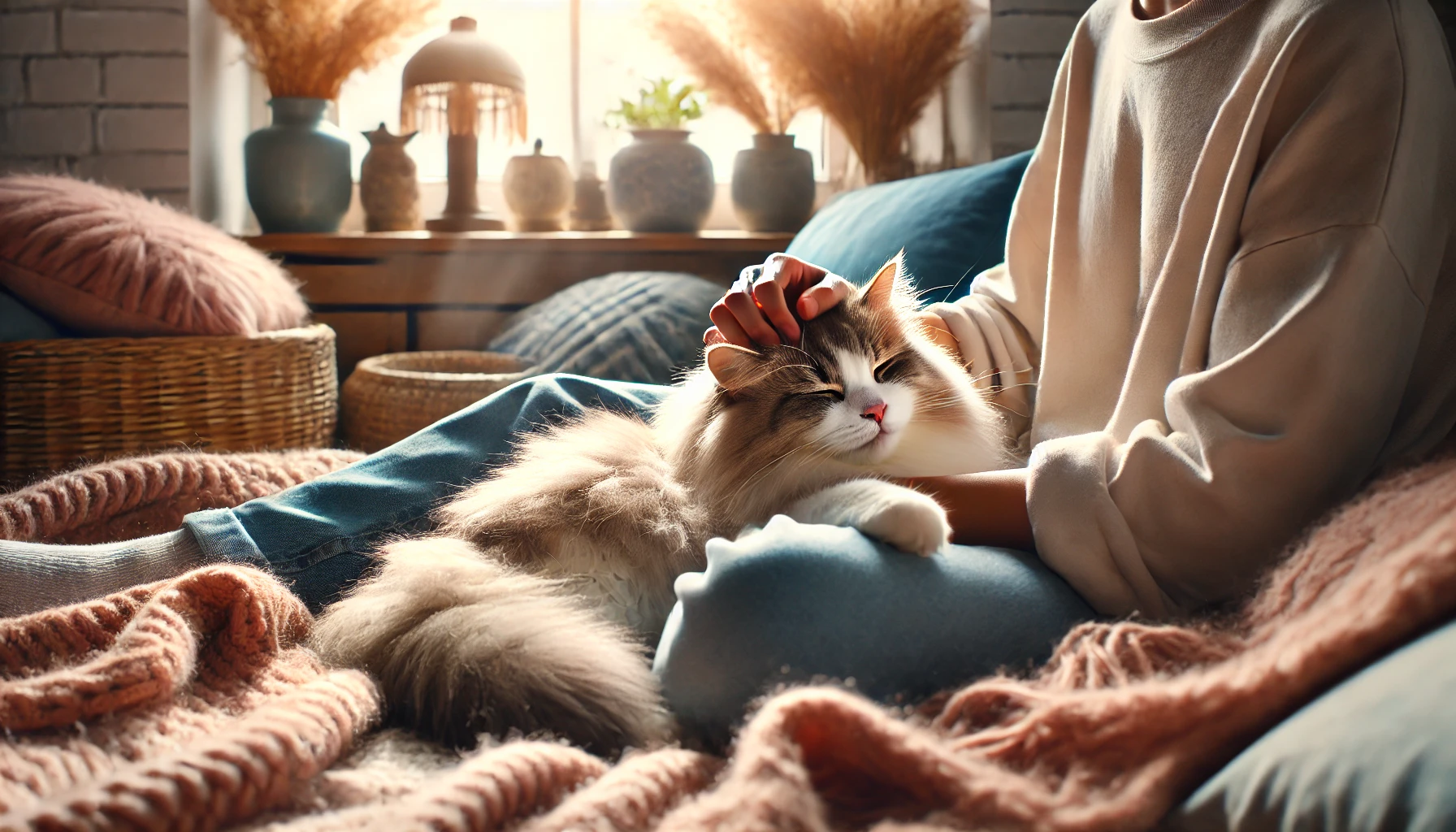
Conclusion: Living with a Joyful Companion: The Ragamuffin Cat
The unique appeal of the Ragamuffin cat lies in its exceptionally gentle and affectionate nature, making it a truly special companion.
Whether it’s their plush, sumptuous coats or their friendly, laid-back personalities, Ragamuffins have the potential to bring immense joy into any home.
In this article, we’ve explored key aspects of caring for, training, and adopting these wonderful felines, each of which plays a vital role in their reputation as perfect family pets.
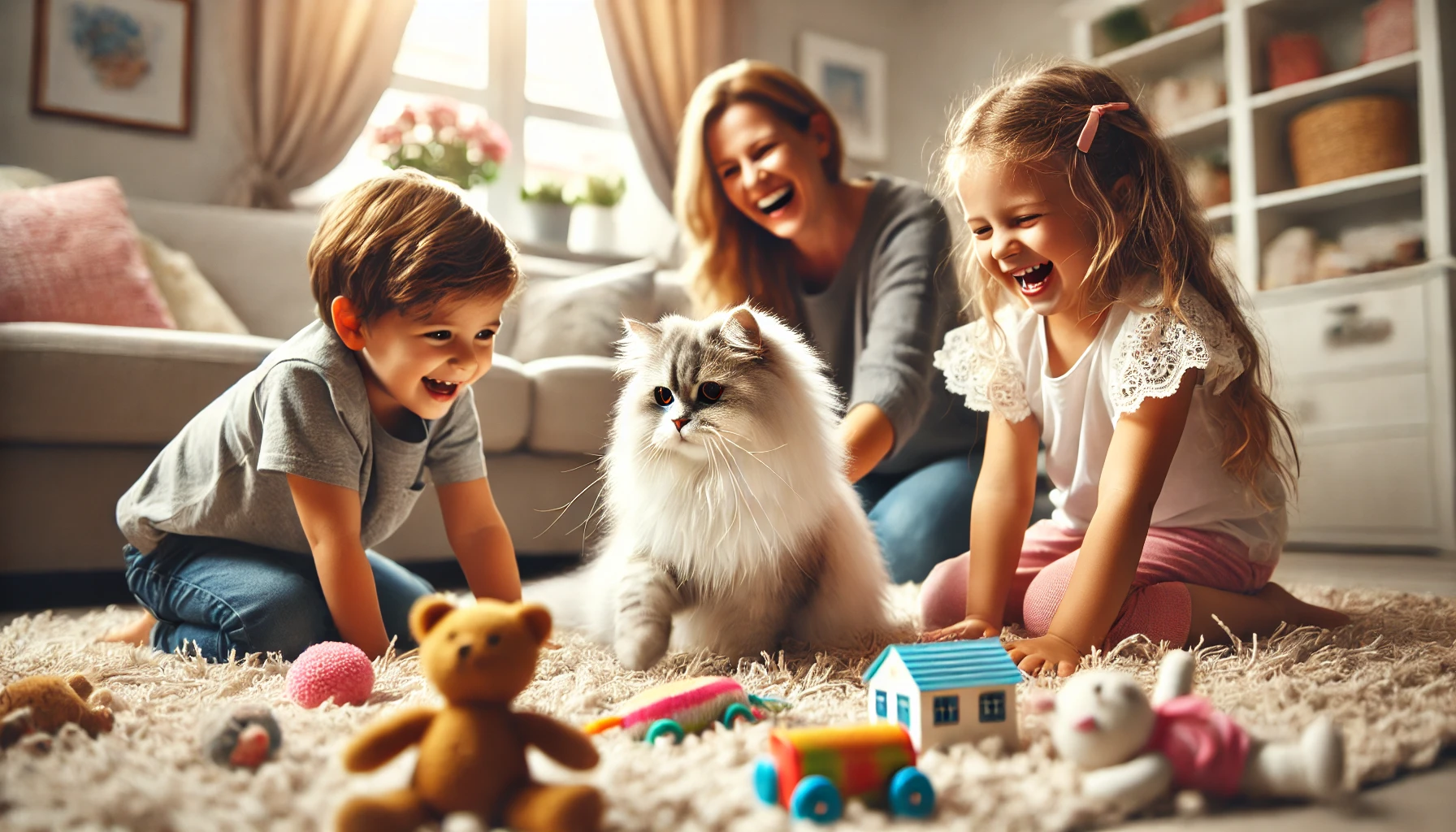
Why Ragamuffins are Ideal Family Cats
The affectionate nature of the Ragamuffin, combined with their tolerance for children and ease of living with other pets, makes them an ideal family companion.
Their calm demeanor and deep attachment to their human families allow them to adjust seamlessly to homes with kids or other animals.
Ragamuffins naturally crave attention, making them well-suited to indoor living, where they can thrive in a safe and loving environment.
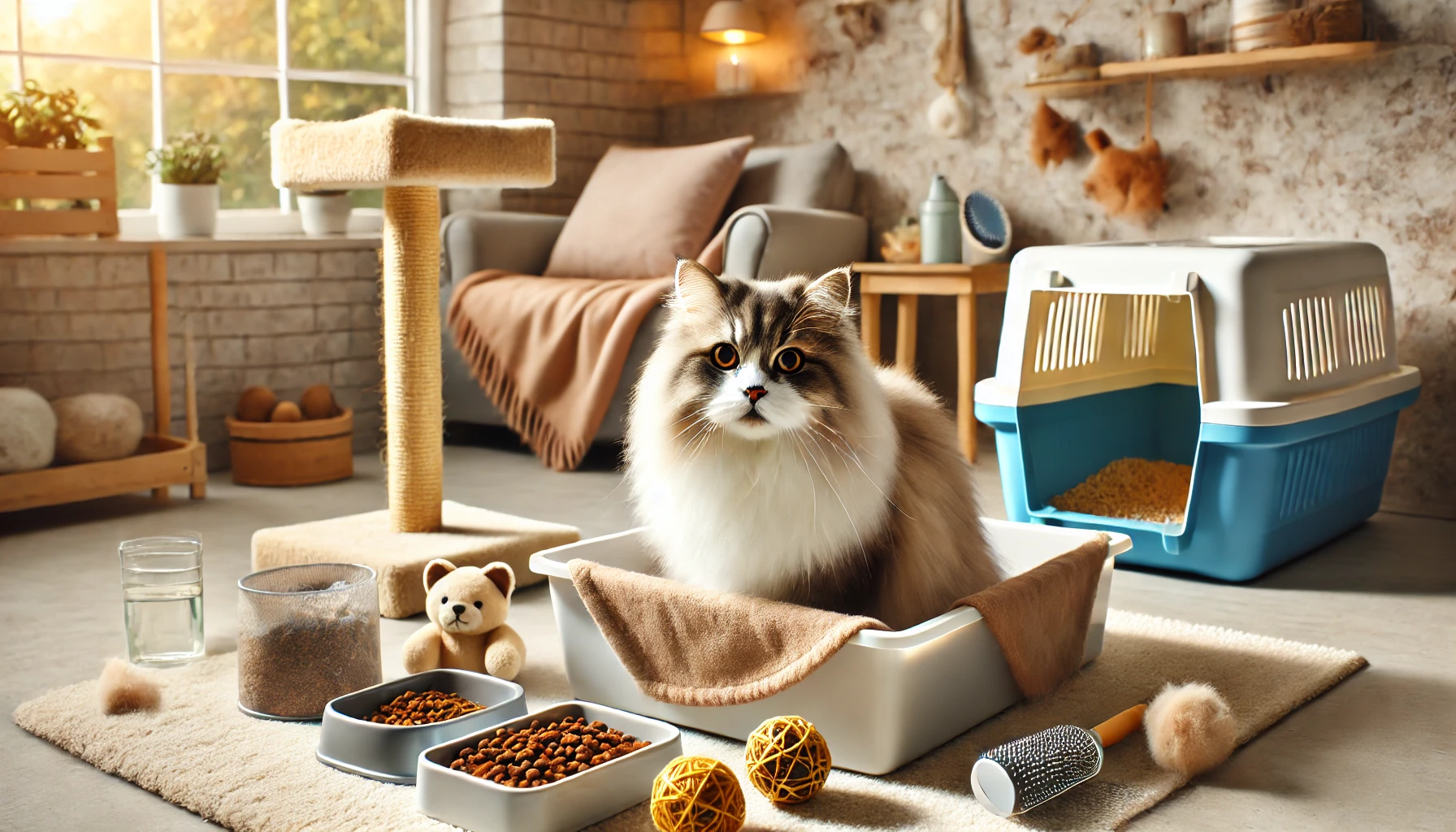
Key Elements of Caring for a Ragamuffin Cat
Looking after a Ragamuffin cat is not difficult, but attention to specific needs is important.
From regular grooming to maintaining a proper diet, Ragamuffin owners must ensure that their cats remain healthy and content.
Key elements of caring for a Ragamuffin include:
- Brushing their coats 2-3 times a week to prevent matting and maintain their silky fur.
- Feeding them a high-quality, protein-based diet to avoid obesity, a common issue in these laid-back cats.
- Engaging them in regular playtime to keep their minds and bodies active.
- Scheduling routine veterinary visits to catch potential health problems, such as Hypertrophic Cardiomyopathy (HCM) and dental disease, early.
With proper care, a Ragamuffin cat can live a long, healthy life, often reaching 12-16 years or more.
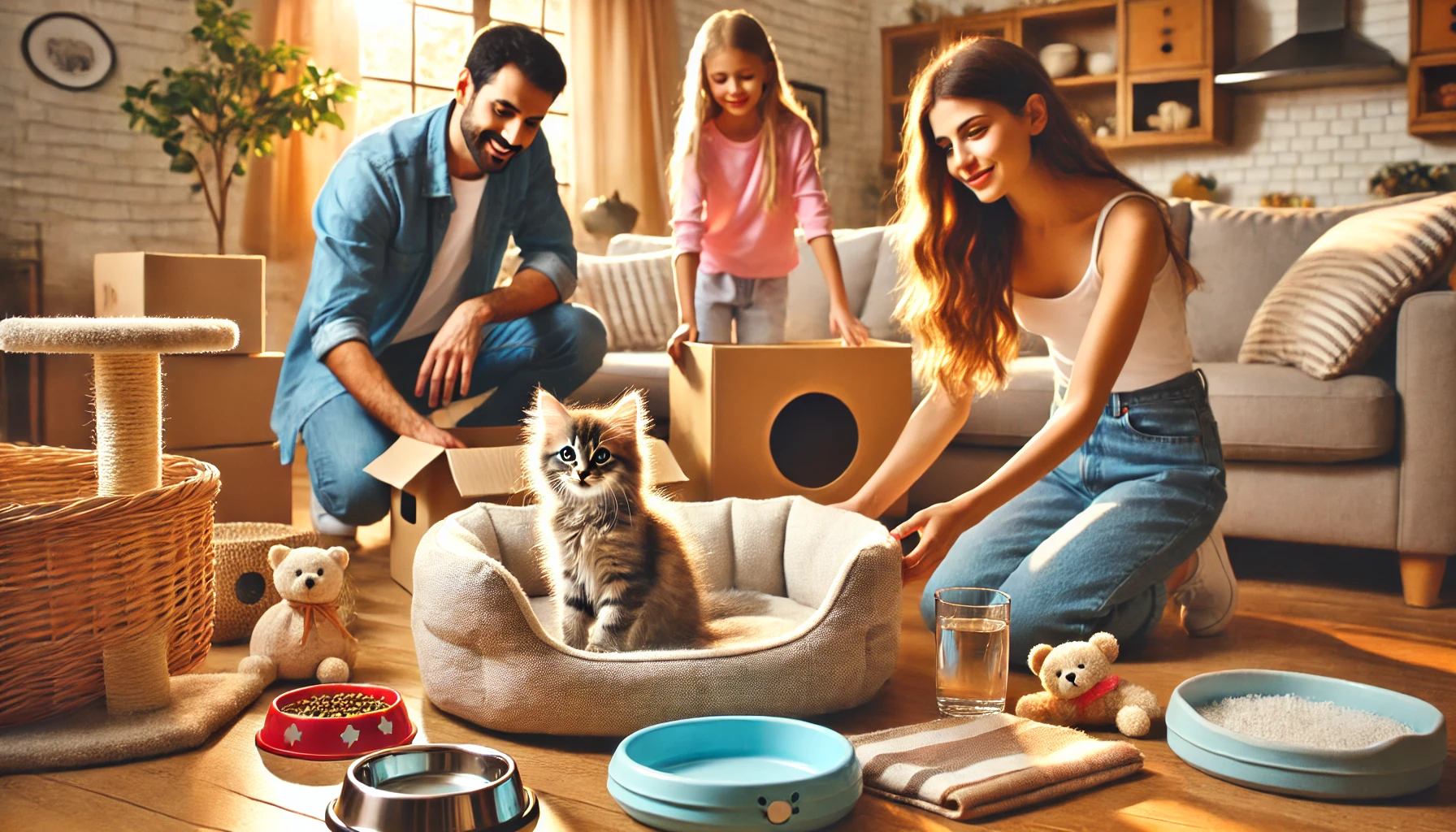
The Adoption Process and Preparing for a Ragamuffin
Adopting a Ragamuffin is a significant decision, and going into it well-prepared can make the process much smoother.
Whether you adopt from a reputable breeder, a breed-specific rescue, or a local shelter, make sure to ask about the cat’s health, temperament, and background.
Prepare your home by gathering the essentials and creating a safe, welcoming environment:
- Set up a safe space where your Ragamuffin can retreat if they feel overwhelmed during the transition period.
- Stock up on necessary supplies, such as food, litter boxes, toys, and a comfortable bed.
- Cat-proof your home by removing potential hazards like toxic plants or small objects that could be swallowed.
- Introduce other pets slowly and in a controlled environment to minimize stress.
By carefully preparing for your Ragamuffin’s arrival, you’ll ensure a smooth transition and a positive experience for both you and your new feline friend.
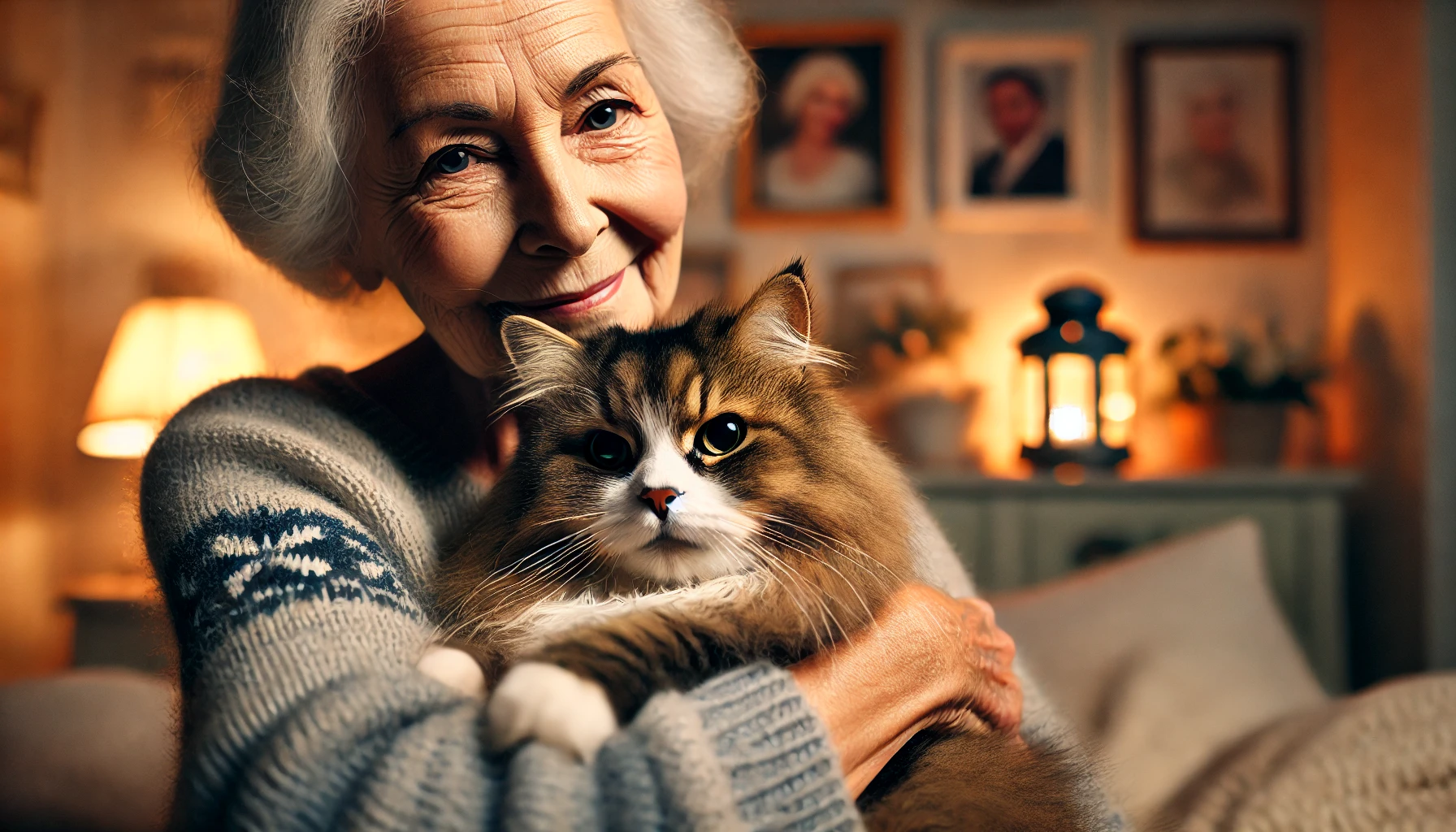
Ragamuffin Cats: A Lifetime of Love
Ragamuffin cats are lifetime companions, offering their families unwavering love and loyalty.
These gentle giants form strong bonds with their human families, and your care and attention will be rewarded with years of affection and joy.
Whether you adopt a kitten or welcome an older Ragamuffin into your home, their loving nature will bring warmth to your life.
Owning a Ragamuffin is a rewarding experience.
With their sweet temperament, stunning appearance, and ability to get along with everyone, Ragamuffins are not just pets; they become beloved members of the family.
If you’re searching for a quiet, affectionate, and loyal feline companion, the Ragamuffin cat is the perfect choice.
Ragamuffin cats are a perfect blend of beauty and affection, offering years of joy and companionship to their families.
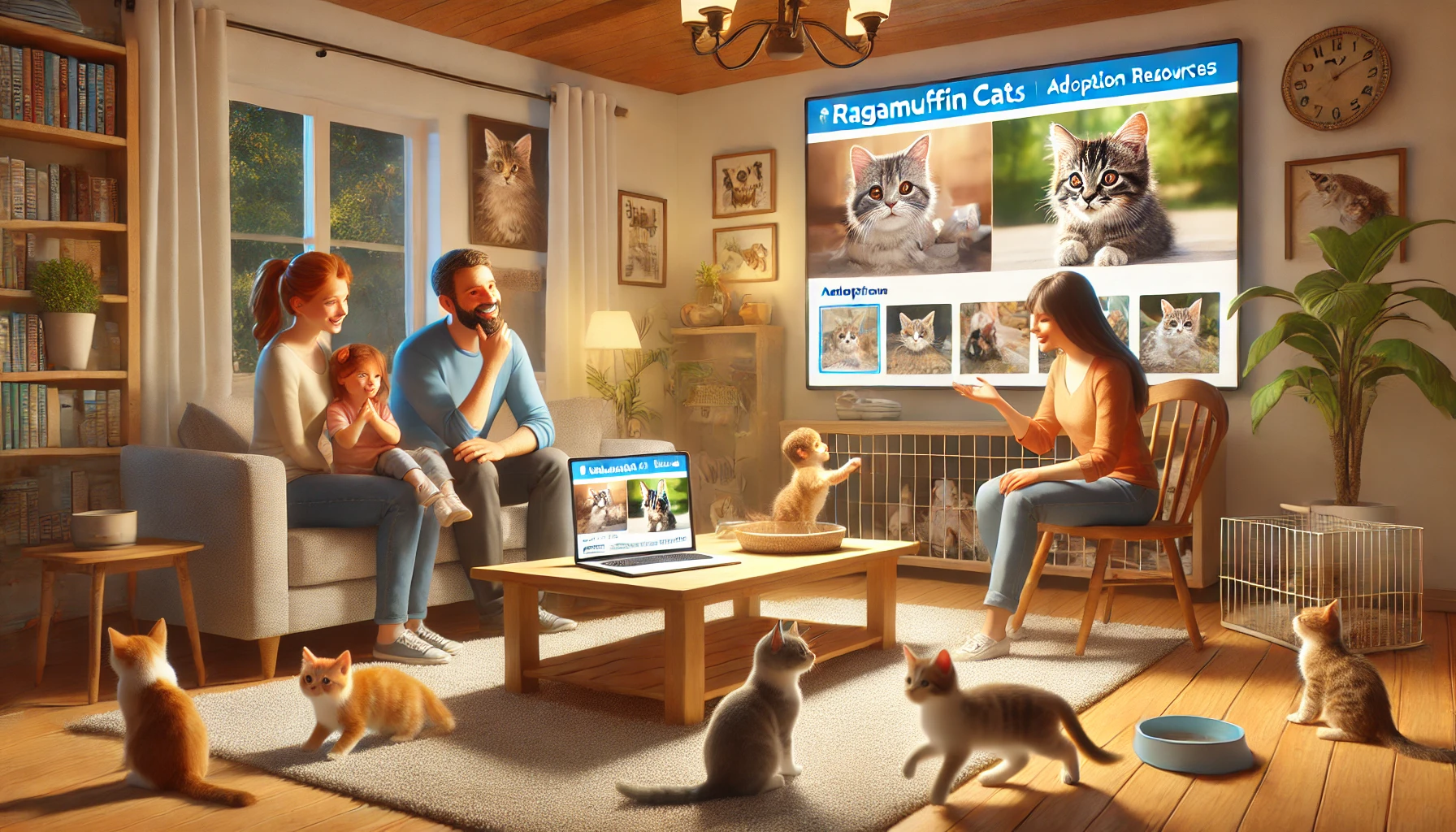
Frequently Asked Questions About the Adoption and Care of Ragamuffin Cats
Below are some of the most frequently asked questions about the Ragamuffin cat breed, their care, and adoption.
If you’re considering bringing a Ragamuffin cat into your home, these answers will help you understand more about what to expect.
Are Ragamuffin cats good with children?
Yes, Ragamuffin cats are gentle, patient, and always ready to be by your side.
They interact well with children, tolerating their games and interactions, providing a safe and affectionate presence in any family environment.
Do Ragamuffin cats get along with other pets?
Ragamuffin cats are very social and adapt quickly to other pets, including dogs and other cats.
They are non-territorial, which makes them easy to integrate into homes with multiple animals.
How much grooming does a Ragamuffin cat require?
Ragamuffin cats have thick, plush coats that need to be brushed 2-3 times per week to avoid matting.
Regular grooming helps maintain their coat’s silkiness and reduces shedding around your home.
What is the average lifespan of a Ragamuffin cat?
With proper care, a Ragamuffin cat can live between 12 to 16 years or longer.
Regular veterinary checkups and a balanced diet are essential to maintaining their health and longevity.
Are Ragamuffin cats prone to health issues?
Ragamuffin cats are generally healthy but can be prone to genetic conditions like Hypertrophic Cardiomyopathy (HCM) and dental diseases.
Regular vet visits are important for early detection and treatment of potential problems.
Do Ragamuffin cats need much exercise?
Although Ragamuffins are not highly active cats, they enjoy playing with toys.
Providing interactive toys and daily playtime helps keep their body and mind active, ensuring their overall well-being.
What should I feed my Ragamuffin cat?
A high-quality, protein-rich diet is essential for Ragamuffin cats to prevent obesity and promote overall health.
Make sure real meat is listed as the first ingredient in their food for optimal nutrition.
Can Ragamuffin cats be left alone for long periods?
Ragamuffin cats are social animals and prefer companionship, so it’s not ideal to leave them alone for long periods.
If you must, provide them with toys and activities to keep them mentally stimulated while you’re away.
How do I adopt a Ragamuffin cat?
To adopt a Ragamuffin, contact reputable breeders or breed-specific rescues.
Always ensure the breeder follows ethical practices, and check for proper health, socialization, and medical records before adopting.

